






















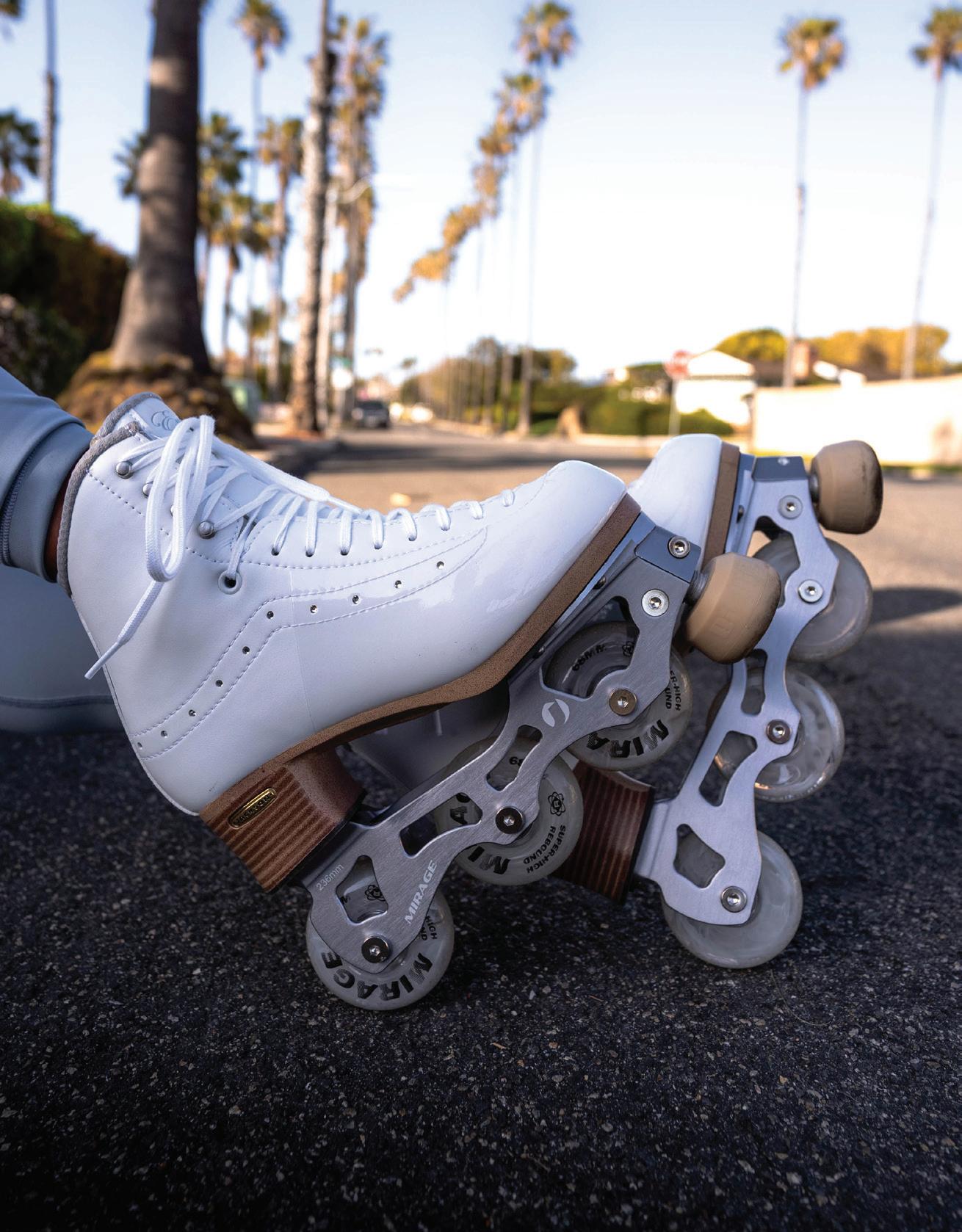
PSA OFFICERS President
First Vice President
Second Vice President
Third Vice President Treasurer
Past President
PSA BOARD OF GOVERNORS West Mid-West East
Members at Large
Ratings Chair
Education Chair
Events Chair
ISI Rep to PSA
U.S. Figure Skating Rep to PSA
PSA Rep to U.S. Figure Skating Summit Chair
Diversity, Equity, &Inclusion
Executive Director
COMMITTEE CHAIRS Awards
Coaches Hall of Fame
Accelerated Coaching Partnerships
Area Representatives Hockey Skating
Sport Science Endorsements
Executive
Executive Nominating Finance
Nominating
Professional Standards PSA Rep to ISI
Adaptive Skating
PSA AREA REPRESENTATIVES
Area 1 Tracey Seliga-O'Brien
Area 2 Kimberlie Wheeland
Area 3 Andrea Kunz-Williamson
Area 4 Jill Stewart
Area 5 Angela Roesch-Davis
Area 6 Maude White
Area 7 Nicole Gaboury
Area 8 Jackie Timm
Area 9 Mary Anne Williamson
Rebecca Stump
Tim Covington
Patrick O'Neil
Kirsten Miller-Zisholz
Lisa Hernand
Alex Chang
Russ Scott
Phillip DiGuglielmo
Andrea Kunz-Williamson
Ashley Wyatt
Cheryl Faust
Jill Stewart
Denise Viera
Denise Williamson
Peter Cain
Cheryl Faust
Denise Williamson
Danny Tate
Jane Schaber
Heather Paige
Kelley Morris Adair
Teri Klindworth Hooper
Darlene Lewis
Jimmie Santee
Andrea Kunz-Williamson
Alex Chang
Debbie Jones
Gloria Leous
Dianah Klatt
Garrett Lucash
Jimmie Santee
Alex Chang
Alex Chang
Lisa Hernand
Alex Chang
Kelley Morris Adair
Gerry Lane
Mary Johanson
Area 10 Francesca Supple
Area 11 Charmin Savoy
Area 12 Roxanne Tyler
Area 13 Liz Egetoe
Area 14 Marylill Elbe
Area 15 Tiffany McNeil
Area 16 Russ Scott
Area 17 Martha Harding
Editor/Advertising
Brock Huddleston
Art Director Amanda Taylor

DISCLAIMER: Written by Guest Contributor | PSA regularly receives articles from guest contributors. The opinions and views expressed by these contributors are not necessarily those of PSA. By publishing these articles, PSA does not make any endorsements or statements of support of the author or their contribution, either explicit or implicit.
THE PROFESSIONAL SKATER Magazine Mission: To bring to our readers the best information from the most knowledgeable sources. To select and generate the information free from the influence of bias. And to provide needed information quickly, accurately and efficiently.
The views expressed in THE PROFESSIONAL SKATER Magazine and products are not necessarily those of the Professional Skaters Association.
The Professional Skater (USPS 574770) Issue 1, a newsletter of the Professional Skaters Association, Inc., is published bimonthly, six times a year, as the official publication of the PSA, 3006 Allegro Park Lane SW, Rochester, MN 55902. Tel 507.281.5122, Email: office@skatepsa.com
© 2023 by Professional Skaters Association, all rights reserved. Subscription price is $19.95 per year, Canadian $29.00 and foreign $45.00/year, U.S. Funds.
We have moved to a quarterly model that will allow us to administer more exams. successful launch of our Group Coach ratings, as well as the creation of an exciting new discipline that will be launched in August…Solo Pattern Dance!
Here’s what this means for you, as the candidate:
1. All rating sites will be filled on a first-come, first-serve basis. Once you have signed up for an exam and have purchased it through our website, you are guaranteed a spot.
2. Be sure to mark your calendar and stay tuned to our social media channels. You won’t be able to sign up for an exam if the rating site has sold out, so be sure to sign up early!
3. All virtual rating sites will offer all levels of exams in all disciplines, with few exceptions.
Our goal is that with guaranteed dates, rating candidates will feel more confident in their ability to effectively plan for studying and mentoring sessions and all those who wish to take an exam are able to.
Mark your calendars for the following dates:
• November 17-19, 2023
• February 9-11, 2024
• April 12-14, 2024
Be sure to keep your eyes peeled for updates through our website and social media channels. We will announce when registration will become available, and encourage you to sign up as soon as you can.
Don’t miss this opportunity to get help preparing for a PSA Registered or Certified Rating. The Accelerated Coaching Partnerships Committee and its advisors have developed Ratings Study Groups, a new educational tool to help you prepare for a registered and certified exams.
Classes seek to provide personalized tutelage in how to take a rating exam. The interaction within the group goes beyond what a large seminar can provide. Ratings Study Groups dig deeper into how to answer questions in a concise manner, provide practice in performing organized walk throughs, help you organize your methodology of coaching and technique, and most importantly, help you — the exam candidate — be more prepared
Email Debby Jones ASAP if you would like to participate. d.jonesskate@gmail.com
To protect your privacy, classes are not recorded.
Want to learn more about this new discipline? We were thrilled to have Steven Belanger and Ken Foster present at the 2023 Summit and introduce attendees to Solo Pattern Dance.
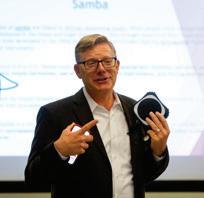
Study Groups are led by Master Rated coaches who are current examiners and are limited to six attendees.

And don't worry if you didn't make it to Orlando— you don't have to miss the introduction! Visit PSA TV and purchase the 2023 Summit Collection to catch sessions on Solo Pattern Dance among all sorts of educational goodies.
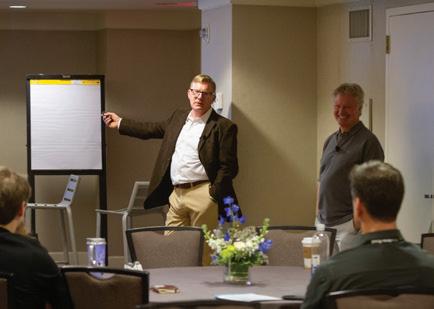
Isabelle Levy
Camila Antillon Novelo
Marie DeLuca
Jessie Miller
Lisa Olson
Shannon Peck
Kaylan Tuohey
Andrea Dekeseredy
Desiree Bourne
Samantha Sorber
Hannah Bay RFS
Kelly Belin CPD
Ann Birchard CG
Sabrina Brewington RG
Jessica Chism CD
Analia De Jesus RSS
Pavel Filchenkov SFS
Becki Hendren RSS
Alexander Ho CD
Tammy Jimenez CPD
Nicholas Kraft CFS
Jodie Kristy CPD
Jacqueline Benson SC
Alexis Cunningham-Capouellez SPD
Erin Egelhoff SSS
Caitlin Ramsey SSS
Elizabeth Treu SSS
Hockey Skating 1
Megan Gibeau
Susan Blaisdell
Kaylee Pierce
Hockey Skating 2
Karri Nachtigal
Allison Carlson
Julia Bikbova
Connie Budiwarman
Candace Elmquist
Jennifer Stevens
Coach Aimée Skating Academy
Lucas Marquardt RG
Tatum Nachtrab CSS
Megan Statz RSS
Alyssa Stump CG
Kimberly Wilczak RSS
Brenna Greco SG
Matthew Lind MFS
Doris Papenfuss-Swartz MSS
Allye Ritt MSS
Kristina Soto MG
Hockey Skating 3
Karri Nachtigal
Hockey Skating 4
Karri Nachtigal
Jane Taylor
Beth O'Conor
Lisa Geltz Perri Group & Skating Skills
Andria Kelling Group
Phillip DeGuglielmo Free Skating
Jonathan Hayward Free Skating
• Caylin Rudedenman Level 4 Singles
• Carla DeGirolamo Level 8 Synchro
• Lauren Ross Level 4 Singles
Kathryn Vaughn Chroroegaphy
Nicole Zawojski Skating Skills
Brock Huddleston Skating Skills
Lake Hiawatha, New Jersey
Ice Den Chandler

Chandler, Arizona
Ice Den Scottdale
Scottsdale, Arizona
Edge Skating Academy
Littleton, Colorado
Iowa Figure Skating Academy
Urbandale, Iowa
Kettle Moraine Figure Skating Club West Bend, Indiana
Marquette Figure Skating Club
Marquette, Michigan
Onyx Suburban Skating Academy
Rochester, Michigan
Palm Beach Ice Works
West Palm Beach, Florida
Palm Beach Skate Zone
Lake Worth, Florida
Park City Ice Arena Park City, Utah
Rochester Figure Skating Club
Rochester, Minnesota
The Greensboro Ice House
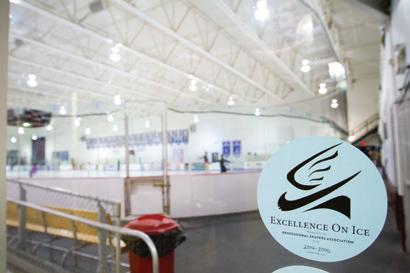
Greensboro, North Carolina
World Arena Ice Hall
Colorado Springs, Colorado
www.skatepsa.com
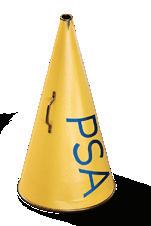

Group (grüp) n. 2 A number of individuals assembled together or having some unifying relationship.”
(Merriam-Webster Dictionary)

In the typical work week of a coach, the time spent with your athletes is probably dominated by private or semi-private lessons. You plan lessons and training schedules to optimize your athlete development and success. You team teach with coaches who compliment your own areas of expertise and learn from them. And as a coach who is dedicated to being the best you can be, you’ve probably spent a lot of time educating yourself and perfecting your craft for your athletes in these scenarios. But what about the time spent developing your competency in coaching groups? How are you growing in your group instruction proficiency?
When you hear “group instruction,” I imagine some of you see skaters who are stepping onto the ice for the first time. Maybe you see several skaters working to refine their backward crossovers. Or maybe a class of adults who are overcoming their fear of falling. All of these examples are what we typically find in rinks with a curriculum designed to deliver basic skating instruction to three or more people. But are there other types of groups that may not automatically come to mind but fit the definition of group as stated above? These could be a power class, an edge class, a synchro team, a hockey skills class, an off-ice strength training class, a jump camp, or a team camp, to name a few. Even a group of PSA coaches meeting together in a workshop setting or at Summit are participating in group instruction.
Regardless of the composition of the group or location, the participants share a unifying relationship and are engaged in a process of learning. The process and way we learn is universal. In classical academia, the three phases are grammar, dialectic, and rhetoric. In skating, it can be categorized by learning new skills, then practicing the skills, and finally sharing the skills with others in creative and beautiful ways. For our athletes, we identify this
process of learning as the introductory, developmental and mastery plus enhancement phases of progress. As we strive to help our athletes attain mastery, there is a cycle of repetition and assessment that leads to refinement. But what does this look like for us as coaches? How do we grow in our own group instruction expertise? After all, what we inspire and produce within our skaters over time reflects our professional growth and development.
The three stages of learning:
1st
Stage - In this stage, you expand your knowledge . This comes with acquiring information through reading books, articles, CER manuals and curriculum for the instruction program your rink implements, watching PSA TV, shadowing/observing a Master Rated coach, etc. You are learning the words that are effective in communicating with your athletes, parents, peers, and rink management.
Examples of 1st stage assessment
SELF: Evaluate what you did well at the end of each class period. Were you on time? Were you prepared with what you needed? Did you plan your time well? Did you use a variety of traffic patterns? Did you have fun? Did your skaters have fun? Consider what you might improve for next time. Write it down! Plan!
PEER: Ask your program director to observe your class instruction twice during the enrollment period. After each observation, ask for feedback on what you did well and what could be refined.
Stage - In this stage, you are looking to expand your experience. This comes with the application of the information you acquired in the first stage. We practice our craft through team teaching with another coach (yes, even in basic skills group classes), refining our understanding of passing standards, and creating a skill progres -
sion flow chart for higher level skills. This is especially important for coaches looking to work towards being assigned higher level skills classes, free skate classes, and specialty classes.
Examples of 2nd stage assessment
SELF: We retain the same assessments from the first stage. Additionally, you want to evaluate the progress of the skaters through the skill level you are instructing. The lower the level, the more quickly skaters acquire the skills. The higher the group level, the more time is needed for more complex elements. Is your communication effective in moving skaters through the skills in a timely manner? No parent wants to pay for the "million-dollar waltz jump."
PEER: In addition to program director observation and assessment, ask a Master Rated coach to walk through some of the Registered Group Rating Exam questions from the study guide of choice found on the PSA website. This takes refining your technique to the next level! If you don't have a Master Rated Instructor in your facility, reach out to PSA and the Accelerated Coaching Partnership program to be connected with one. 3rd Stage - In this stage, as a group instructor maybe you are looking to beyond the current curriculum or programs your rink currently offers. In a basic skills class, experienced coaches who want to break out of the rut of "do it again" can bring excitement to their class time by introducing elements from specialty disciplines during the final minutes of their class instruction.
Examples of 3rd stage assessment
SELF: Consider your specialty options and the athletes before you. Which specialty options are the most appropriate to introduce? Consider whether you ought to stick to one specialty level for the duration of that class cycle or change it up each week. Is there a coach who has experience as a coach and/or skater in the discipline you want to introduce to your class? If not, do you know of a coach outside your rink who you could ask? Ask them for tips in making the experi ence fun for your class of skaters.
PEER: Ask your program director to come join your class for these specialty moments. Arrange a time to talk about adding a specialty class to the group class time to cultivate skater and customer excitement and retention.
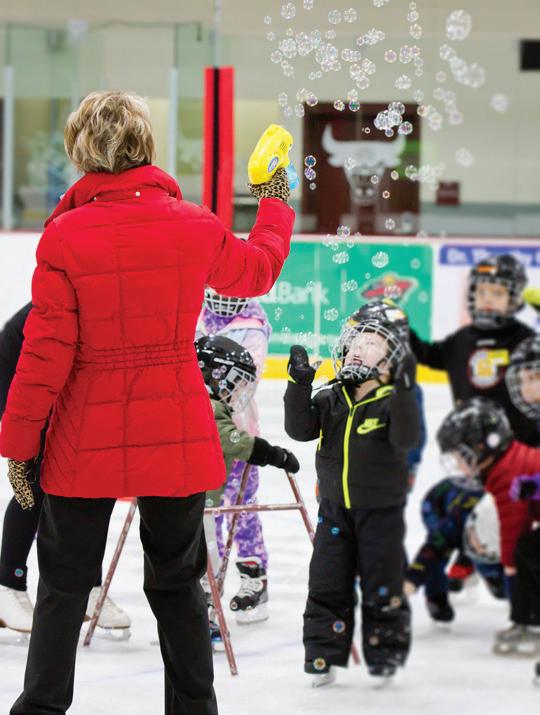
As a coach with 30+ years of group lesson experience, I have yet to attend an educational event where I didn't learn more than a few new things. Very little in life is the same year over year, and that is true in the world of figure skating. Stay current! Stay informed! The benefits of walking alongside your fellow coaches through the channels of learning provided by PSA are numerous! Consider your goals and map out the route to achieve those goals. If you don't know how to get there, ask a peer who has achieved that same or similar goal how they did it. Tailor the journey to fit your unique teaching philosophy. And then enjoy what the journey produces and inspires in the skaters you work with!
"Anything worth doing is worth doing poorly until you learn to do it well." Zig Ziglar. I love this quote not only for my skaters, but also for me. It's a reminder that persistence in striving for excellence is not just for the skater before me, but the skater/ coach within me.

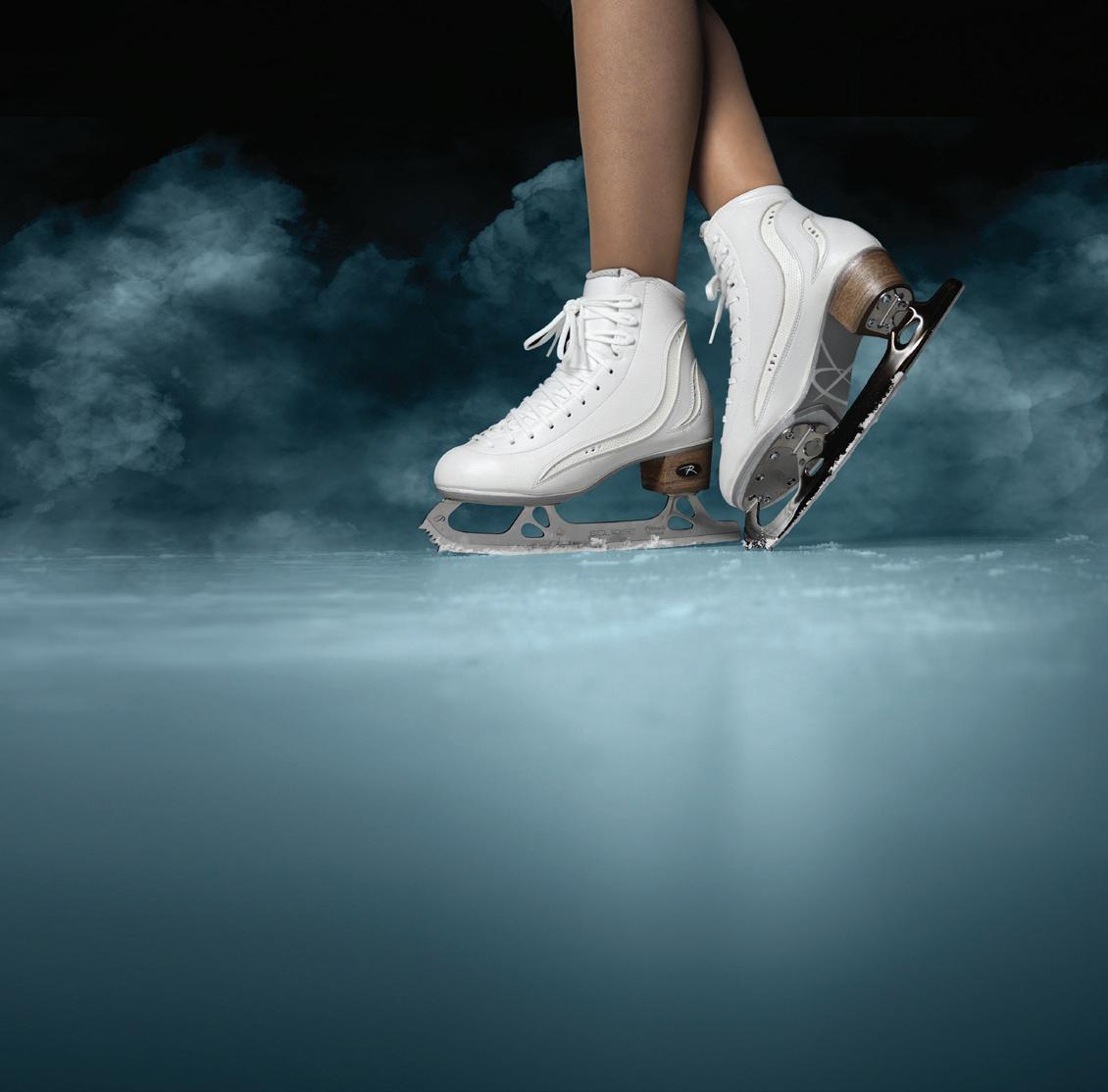

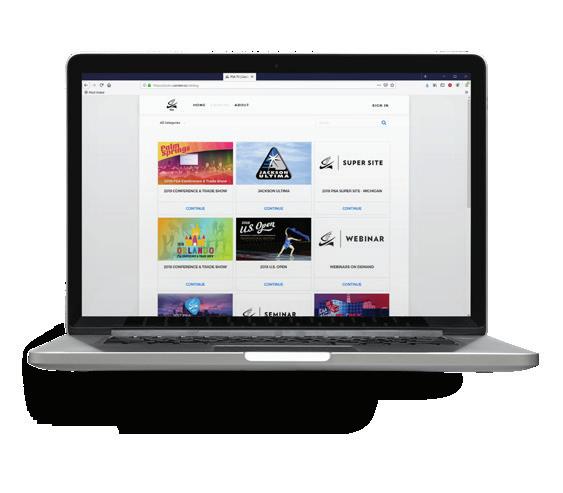

I would like to continue my Letter to the Editor from page 3 with a bonus item for our list:
. It is with bittersweet emotion that I announce the closing of this chapter in my life as a PSA staff member and editor of PS Magazine. As such, this issue will be the last of which I am editor.
For those who know me, you know that Hawaiʻi is the place where my heart is truly happiest. During the pandemic, I “temporarily” moved away to keep my feet on the ice, and subsequently, found myself elected to PSA’s Board of Governors before being offered a staff position. Never in my life had I imagined I would be serving in these types of roles. I can’t express enough how grateful I am for these experiences.
With the announcement that our rink in Hawaiʻi was reopening, however, it was time for me to go back home. Once here, another incredible opportunity had presented itself—as a result of the many changes brought about by COVID, the rink was in need of a new Skating Director.
As I continue to navigate life, I’ve found that one of the hardest times to make a decision is when there is no “bad” option to choose. This was one of those situations. Ultimately, although I am excited to announce my new role as the Ice Palace Hawaiʻi’s Skating Director, I knew it meant I would no longer have the time to be a full-time PSA staff member. After conferring with Jimmie, it was decided: he would assume the role of editor for PS Magazine while I embarked on this new chapter.

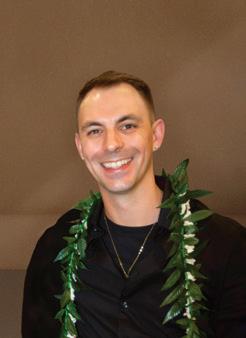
To all of you reading this: thank you for inviting me into your homes, offices, rinks, and clubs for the last year. Thank you for writing in to share your ideas and opinions, authoring an article, or simply sharing this magazine with a coworker.
I would like to extend a special thank you to the PSA Board of Governors who I have worked closely with over the last year. I appreciate each and every one of you, your wisdom shared, and your passion for the sport.
Finally, to the PSA staff members—Jimmie, Amanda, Barb, Charmayne, Donna, Heidi, and Elizabeth— thank you for your unwavering support, help, guidance, friendship, and laughter. You’ve been by my side (virtually) through a rollercoaster of a year and I can’t express how much I appreciate each of you. It has been my honor to work with you.
With that, it is time for me to “sign off” one last time.
Brock HuddlestonWhenit comes to shaping workforces and products, increasingly more organizations are embarking on the Diversity, Equity, and Inclusion (DEI) journey. Sports organizations like the NFL, MLB, USTA, and USAG have implemented DEI practices for several years. Within the past three years, both U.S. Figure Skating and the PSA have started DEI initiatives.
One of the key steps to embracing DEI and internalizing it as part of an organization’s DNA is to identify the myths that surround DEI and impede the success of DEI initiatives. Myths get in our way because they are pervasive both inside and outside the very programs, institutions, and communities working to initiate DEI strategies. Dispelling these myths can bring greater understanding and clarity of purpose to the DEI cause.
Skating is, and should be, for everyone. There are several myths that have the potential of stopping us from making this vision a reality. Busting through the following three key myths can help increase awareness and understanding of DEI, and can also help remove the barriers that might stop you from taking action within your own coaching business, group skating programs, clubs, and rinks.
Today, the topic of race is very much in the public view due to the media’s focus on political “flashpoints” such as immigration from Mexico, Central America and South America; current political discussions and legislation that define how slavery is taught in schools; and the banning of books that explore topics of race in classrooms.
In figure skating, the underrepresentation of Black and Brown people in the sport is noticeable, and so naturally, there is more discussion and action around this topic and methods for increasing representation. This is not, however, the only focus of DEI initiatives in the sport. By looking at the definition of DEI, this becomes abundantly clear.
As such, DEI asks the following questions: Who is at the table in the spaces in which we live and work? Who is missing? Who is excluded? How can we welcome everyone to the table?
We say “skating is for everyone.” And as we diversify our sport, we do so knowing that human beings are complex. We have different identities along
race, gender, age, sexual orientation, religious orientation, class, ability, and other definitive lines, and we identify in more than one of these areas at the same time (e.g., Queer and differentlyabled, Asian and trans), so DEI works in an intersectional space that is experienced differently by each of us based on how we identify and define ourselves.
So rather than DEI being simply about race, it is in fact so much more richly complicated.
DIVERSITY: Sufficient representation of varied social identities and positions such as age, ability, body type, color, economic class, ethnicity, gender, gender identity, gender expression, language, marital status, national origin, race, religion, size, etc. Diversity can also include differences of thoughts, experiences, and opportunities
EQUITY: The use of targeted strategies that acknowledge the specific needs and provide remedies to equalize the opportunities and resources for a marginalized group without making structural change
INCLUSION: The efforts, policies, and practices that amplify, empower, and validate diverse voices and experiences to foster a shared sense of belonging
Source: Coaching in a Changing World: Why You Need to Embrace Diversity, Equity, and Inclusion, PSA CER Curriculum 2022 written by Darlene Lewis, Kadari Taylor-Watson, and Denise Viera
This idea perfectly leads us to our next myth:
Opening up a can of worms is an idiom defined by Merriam Webster as taking actions that “create a complicated situation in which doing something to correct a problem leads to many more problems.”
It is true that change can often lead to discomfort and the need to address new situations both small and large in scope. For example, how do we address a synchro team committed to diversity and inclusion who still must “deal with” what it means that the skaters should match in every way including costumes, when meshes and tights match the skin complexion of the white teammates but stand out on the black and brown skaters – and make them feel at best uncomfortable. Or how do we address pairs/dance teams and rules (or lack thereof) around same-gendered and non-binary couples. What does it mean to embrace
diversity, equity, and inclusion when our own values do not align with one or more of the cultural, social, or religious diversity lines of identity?
Within the US, most people’s individual social networks are still not that diverse. This can lead to discomfort with people from backgrounds different from our own, stereotyping, and the perpetuation of biased practices and systems. Historic disadvantage, stereotyping, and implicit bias can interfere with or prevent full realization of an athlete’s potential. To achieve equity and inclusion now, we must acknowledge past and current inequities within skating.
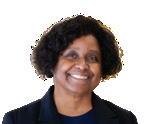
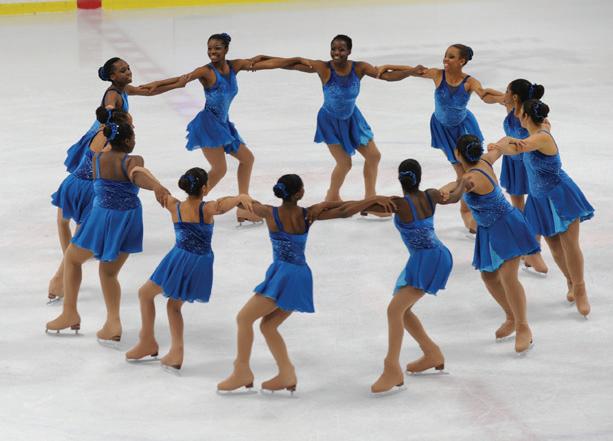
If we believe skating is for everyone, any obstacle along the way to actualizing that belief is not a can of worms but is instead another opportunity to grow our skating programs, evolve in our thinking, or be clearer about our boundaries.
Looking at our own bias and privilege, even as we strive for the inclusion of everyone, can be very uncomfortable internally and in interaction with others. Those discussions which inevitably arise whenever we seek to implement DEI are complicated and may even lead to the question, is it worth it?
At face value, this might seem true. With a focus of bringing underrepresented people to the table, for some already at the table, this might feel a lot like exclusion. For others, it is all about “feel-good fairness.” Either way, the emphasis is on “we and them,” not “us.”
Busting this myth is vital. It is the key to unlocking the door to the understanding that DEI benefits everyone.
DEI is the clarion call of the future. There has never been a greater opportunity to be at the forefront of that future…for everyone. Right now. Today. Research points to a world as described in Coaching in a Changing World: Why You Need to Embrace Diversity, Equity, and Inclusion (Lewis, Taylor-Watson, Viera):
Younger generations are significantly more diverse in terms of their racial, ethnic, religious, sexual orientation and gender identity than older generations. Young adults, between 18-34, embrace more gender fluidity with 50% of them agreeing with the statement ‘Gender is a spectrum, and some people fall outside of conventional categories.’
Members of these youngest generations have come to expect diversity in a way that prior generations did not. They are increasingly growing up in diverse family structures in households that are multi-racial, headed by a single parent, and/or have blurred gender roles. They tend to be more independent in their thinking and socially conscious with a greater expectation of societal equity than previous generations. As skating customers, they value access over possession, expression of individual identity, and are concerned about ethics, openness, and authenticity to a degree not found in prior generations.
In figure skating, for those not at the table, it’s the opportunity to experience all the benefits skating has to offer physically, mentally, and emotionally. For those of us already at the table it’s an opportunity to grow our programs and coaching businesses by tapping into these emerging markets and meeting the needs and expectations of new generations of skaters.
Yes, skating is for everyone, and so is DEI!
The PSA’s DEI Committee is made up of PSA Board members and members at large. Over the past three years, the committee has created and delivered coaches training at PSA Summits, through webinars, and in CER curriculum; presented PSA’s first INSPIRE Award; and held the first in a series of “Join the Conversation” virtual meetings focused on how best to support coaches as well as assist coaches in implementing practices to better support our athletes.
If you’d like to be a part of the growing movement, please consider joining the DEI Committee. We’d love to have you join us at the table.
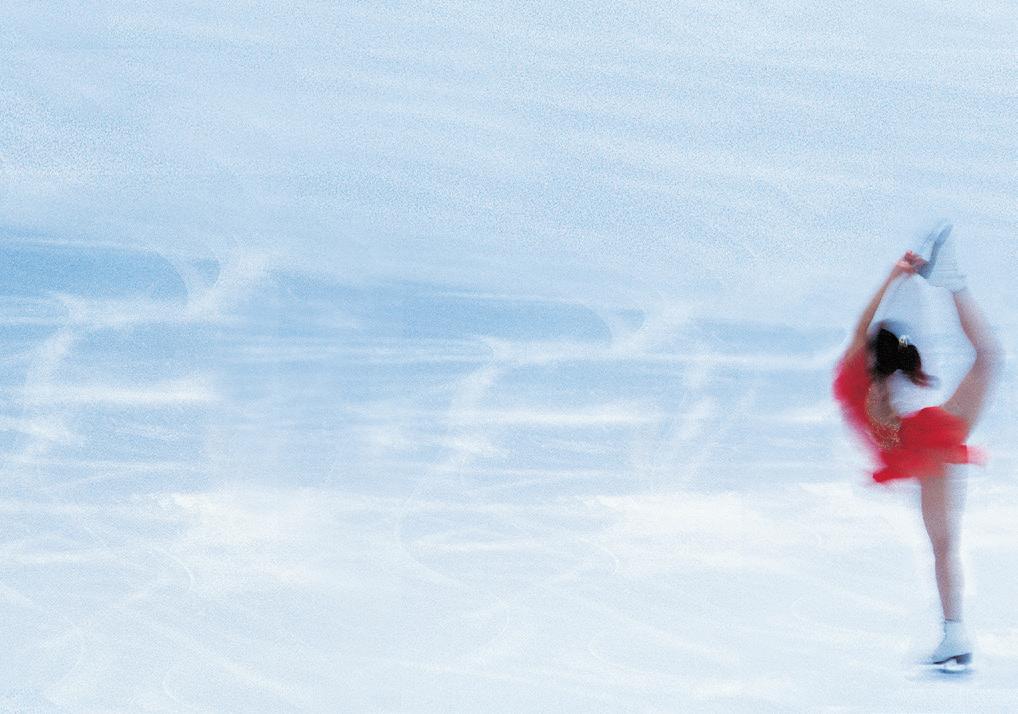
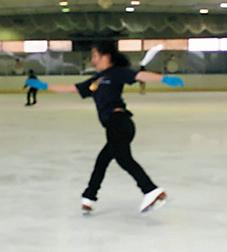



The Professional Skaters Association announced the winners of the annual EDI Awards May 25, 2023 at our annual Summit hosted in Orlando, Florida.
The Education and Dedication International (EDI) Awards are named after the late World and Olympic coach, Edi Scholdan, who died in the 1961 world team plane crash. Scholdan was the first president of the PSA and inspiration for the awards, which recognize exceptional achievement in the sport of figure skating.
COACH OF THE YEAR AWARD
Todd Sand, Jenni Meno Sand, Christine Fowler-Binder, Chris Knierim
PAUL McGRATH CHOREOGRAPHER OF THE YEAR AWARD
Rohene Ward
PIETER KOLLEN SPORT SCIENCE AWARD
Garrett Lucash
F. RITTER SHUMWAY AWARD
Jimmie Santee
BETTY BERENS AWARD
Todd Sand and Jenni Meno Sand
JOE SERAFINE NATIONAL VOLUNTEER OF THE YEAR AWARD
Alex Chang
LEGENDS AWARD
Scott Hamilton
INSPIRE AWARD

Rohene Ward
PHOTO OF THE YEAR CONTEST
Melanie Heaney
DEVELOPMENTAL COACH OF THE YEAR
Chris Pottenger and The Pottenger Academy Coaching Team (Chris Pottenger, Anthony Evans, Caroline Zhang, Russ Scott, Tiffany Chin, and Alan Madina)
DEVELOPMENTAL COACH OF THE YEAR
IT'S A tie!
SHULMAN AWARD FOR LIFETIME ACHIEVEMENT
Debbie Stoery
DISTINGUISHED OFFICIAL OF THE YEAR AWARD
Troy Goldstein
PRESIDENT’S AWARD OF EXCELLENCE
Sofia Inthalaksa – Northwest Pacific Region
Sarah Lyle – Central Pacific Region
Anna Baram – Southwest Pacific Region

Carey Tinkelenberg – Upper Great Lakes Region
Michelle Hunt – Eastern Great Lakes Region
Madeleine Newby-Estrella – Southwestern Region

John Mucko – New England Region
Robbie Kaine – North Atlantic Region
Kitty Kelly McGorry – South Atlantic Region

All recorded sessions from Summit are available online through PSA TV.

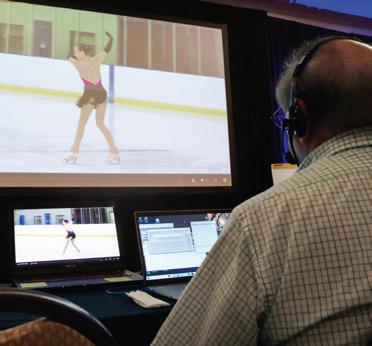

Hey, Summit attendees!
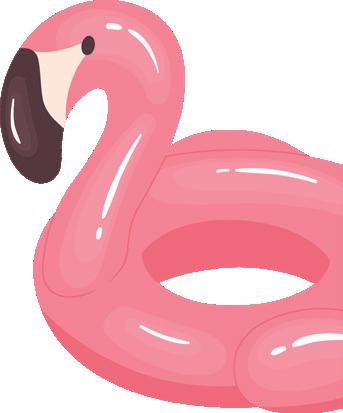
As part of your registration, all attendees have been given complimentary access to all recorded sessions. Just log into your account to revisit the magic!
 IJS Technical Panel In Action: Peter Cain, Matthew Lind, Gale Tanger, Alex Chang
IJS Technical Panel In Action: Peter Cain, Matthew Lind, Gale Tanger, Alex Chang


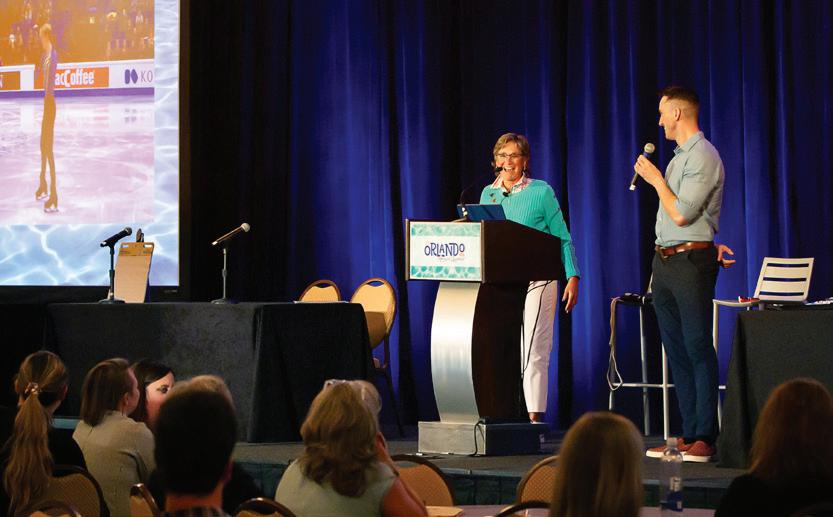
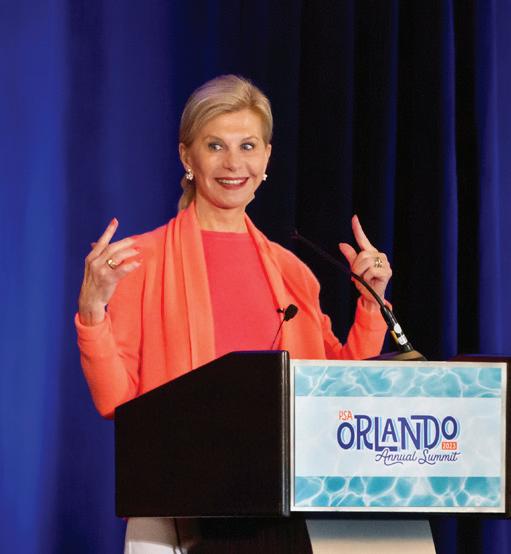

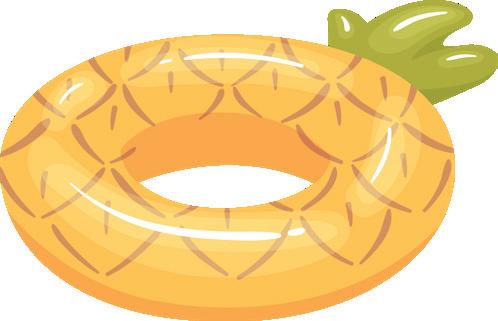

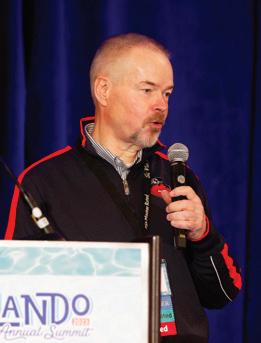
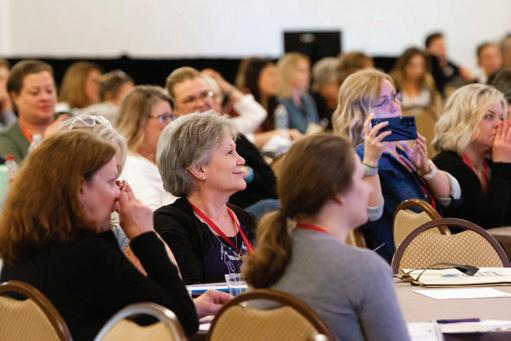
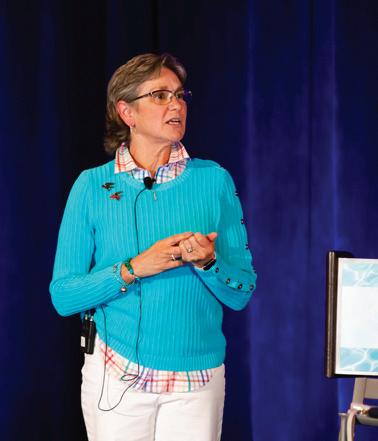
 IJS with Denise Williamson and Matthew Lind
Gale Tanger, Keynote
Rebecca Stump, PSA President
Matthew Lind
David Santee
IJS with Denise Williamson and Matthew Lind
Gale Tanger, Keynote
Rebecca Stump, PSA President
Matthew Lind
David Santee
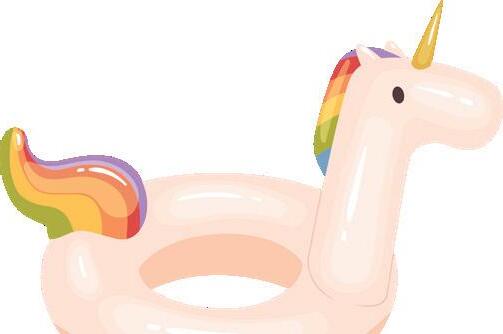
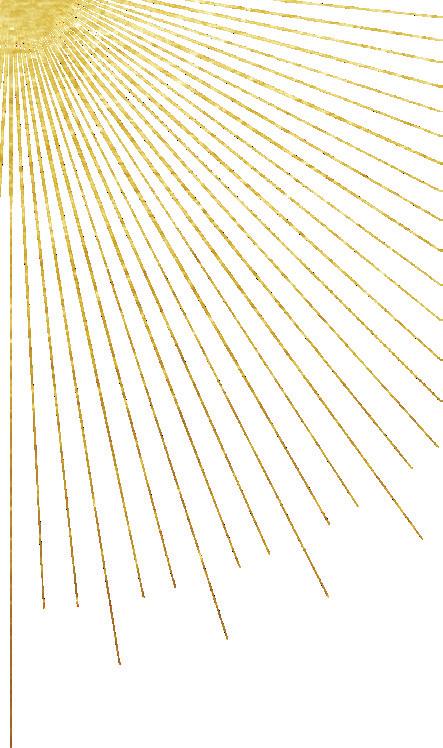
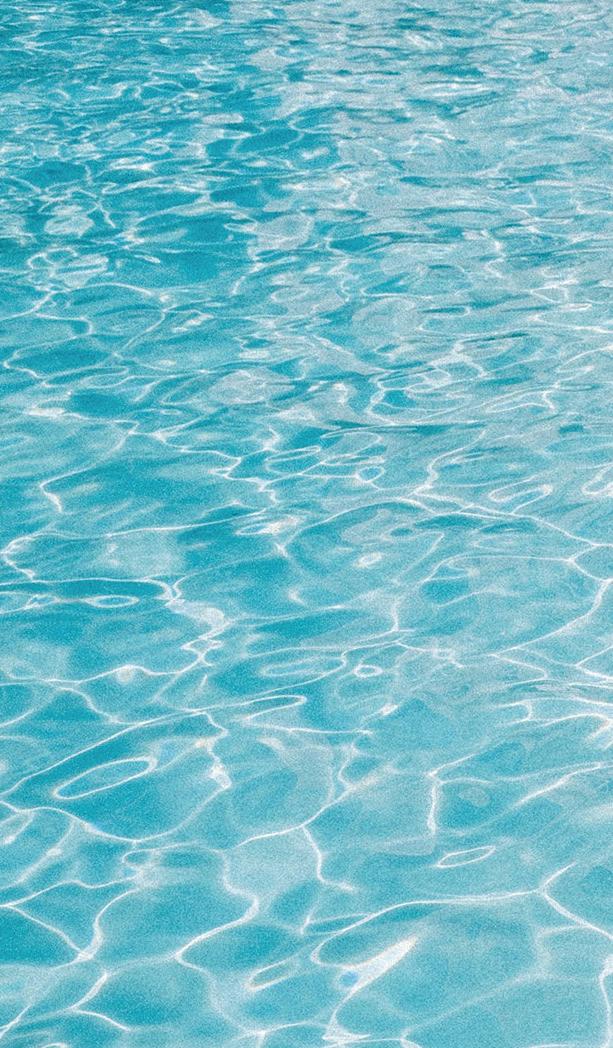
Weren't able to attend Summit? No problem! Purchase on-demand videos at PSA TV and continue your education from the comfort of your own home.

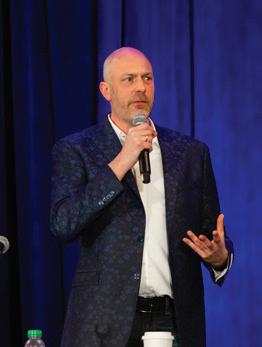
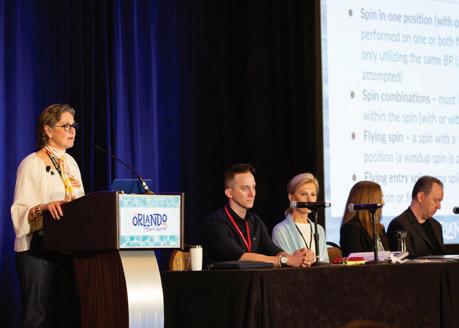

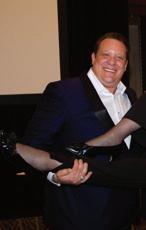
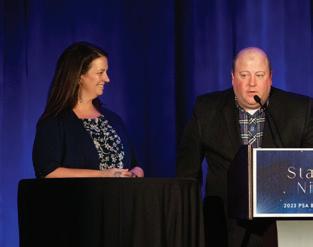
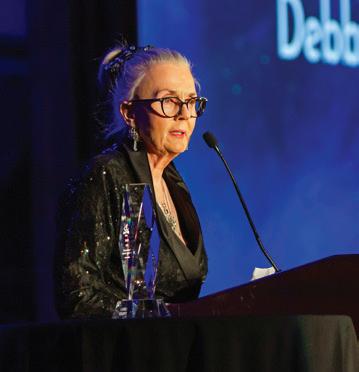

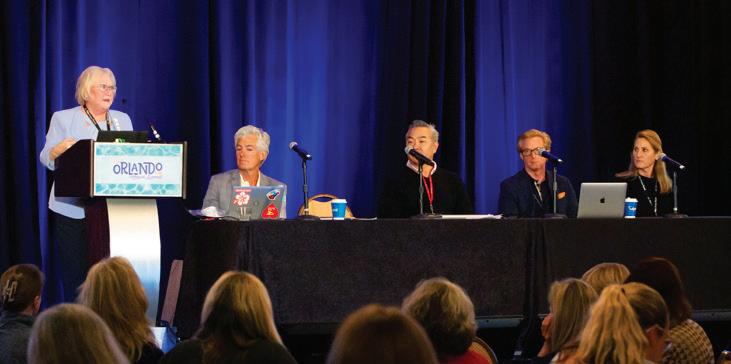


We were thrilled to have long-time member Charles Rossbach, Sr. in attendance!


 PSA General Assembly Business Meeting with the Executive Board members
Tracey Marek, U.S. Figure Skating CEO
Elise Preston
Mark Weitzman
Debbie Stoery
Jenni Meno Sand
PSA General Assembly Business Meeting with the Executive Board members
Tracey Marek, U.S. Figure Skating CEO
Elise Preston
Mark Weitzman
Debbie Stoery
Jenni Meno Sand
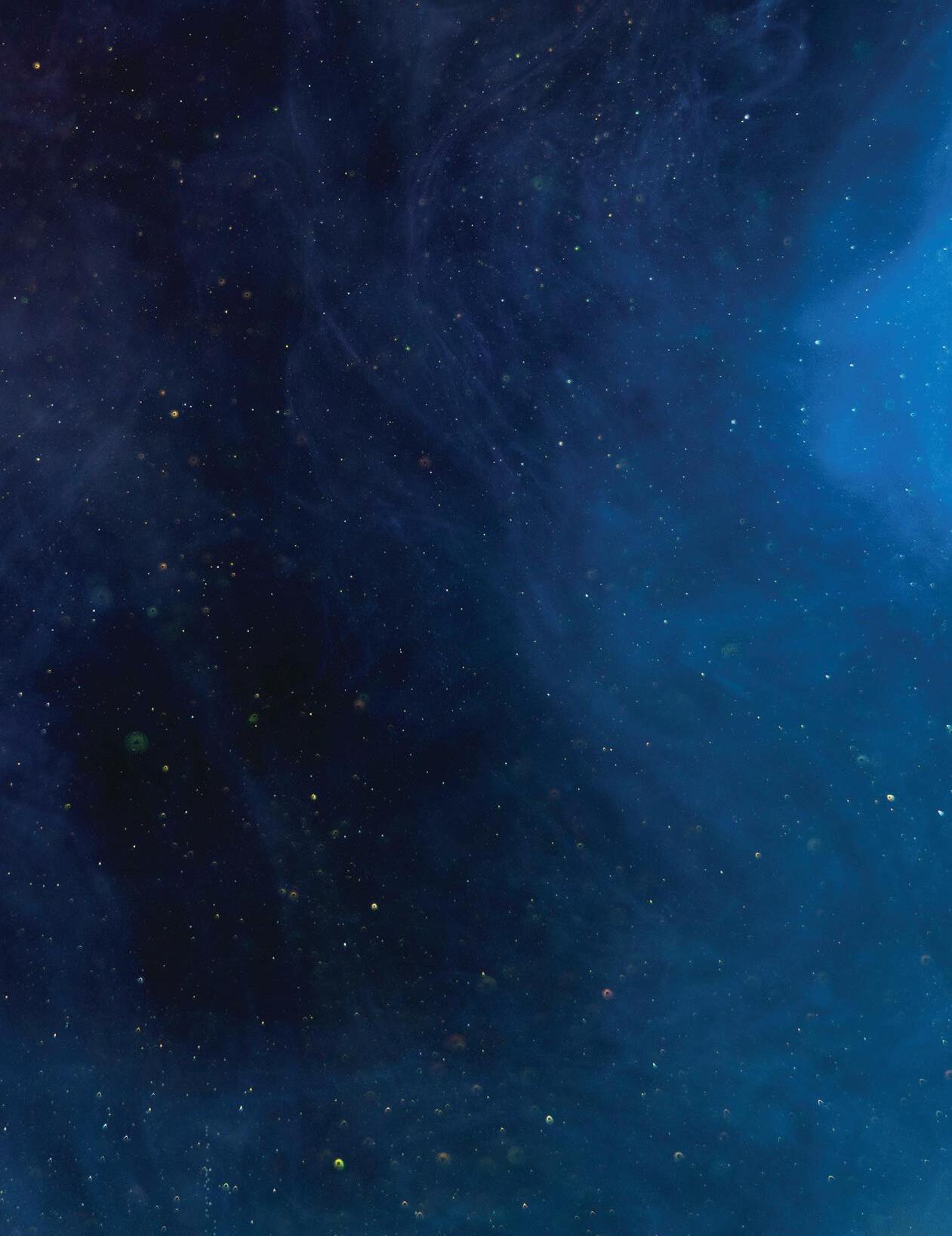
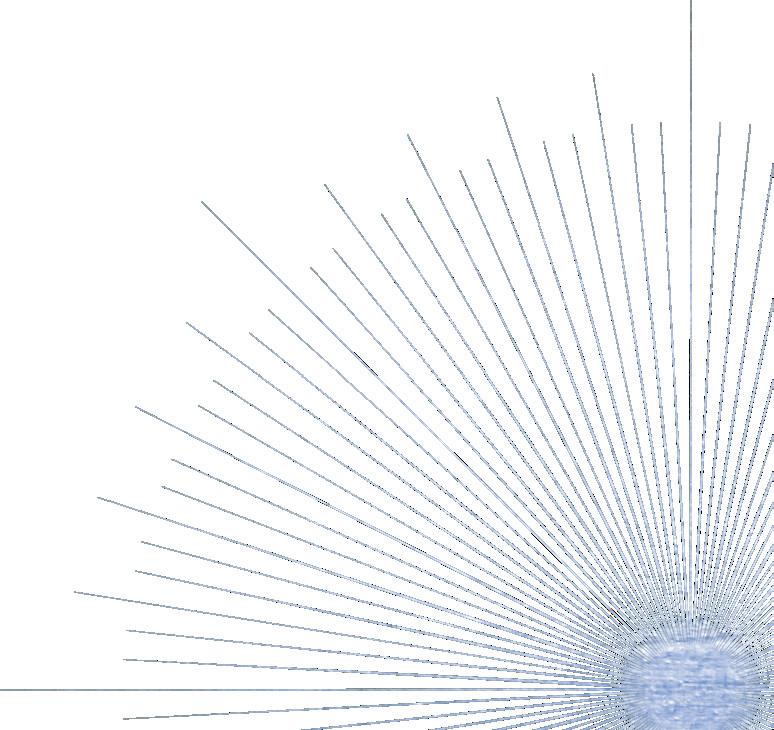

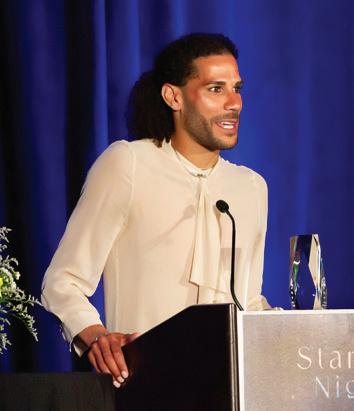


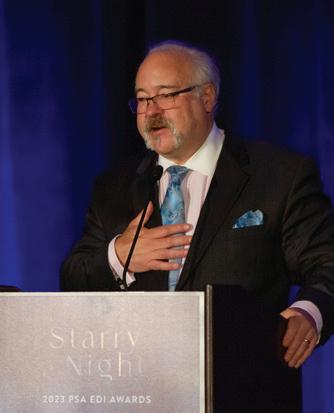
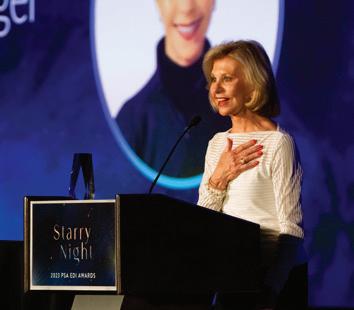
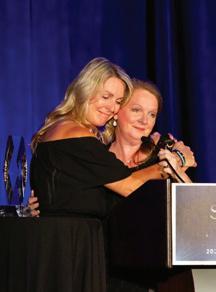


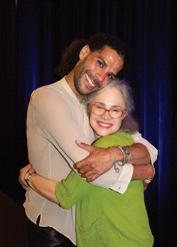




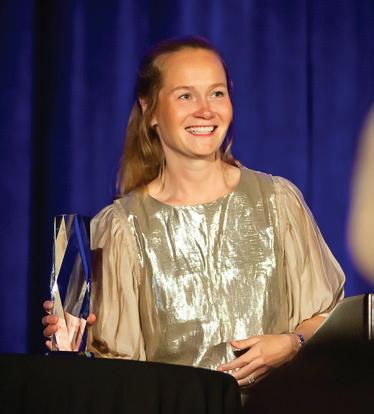 Stoery
Darin Hosier & Corrie Martin
Gale Tanger
Rohene Ward
Chris Pottenger and The Pottenger Academy Coaching Team: Anthony Evans, Caroline Zhang, Russ Scott, Tiffany Chin, Alan Madina
Hosts Alex Chang & Andrea Kunz-Williamson
Jimmie Santee
Troy Goldstein
Garrett Lucash
Attending recipients of the President's Excellence Award
Scott Hamilton
Saga Krantz
Stoery
Darin Hosier & Corrie Martin
Gale Tanger
Rohene Ward
Chris Pottenger and The Pottenger Academy Coaching Team: Anthony Evans, Caroline Zhang, Russ Scott, Tiffany Chin, Alan Madina
Hosts Alex Chang & Andrea Kunz-Williamson
Jimmie Santee
Troy Goldstein
Garrett Lucash
Attending recipients of the President's Excellence Award
Scott Hamilton
Saga Krantz
PSA President Becky Stump, along with Executive Director Jimmie
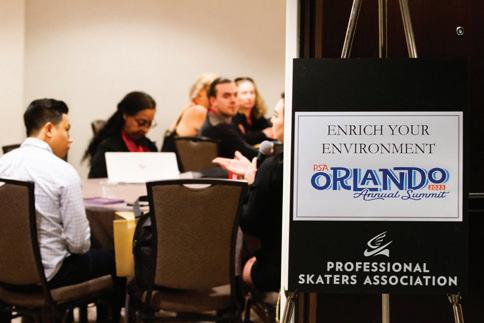




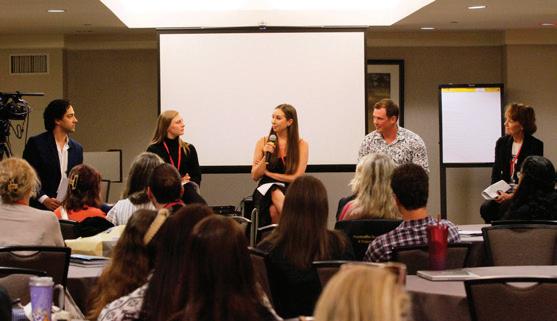
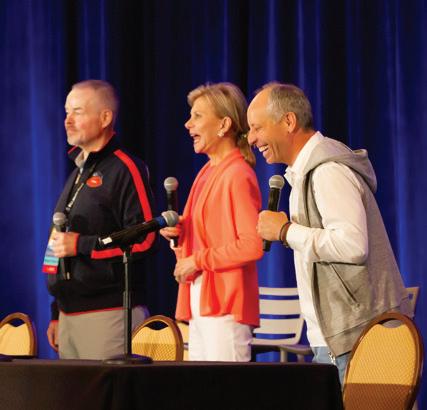
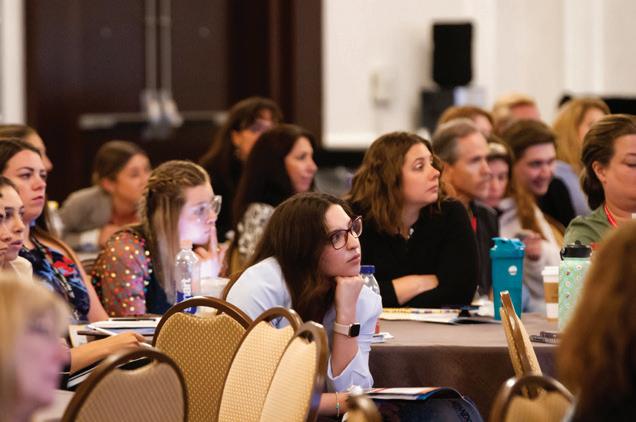


took time to honor and thank Heidi Thibert for her valuable time with PSA as the Director of Education.
 Santee,
IJS Jumps with David Santee, Gale Tanger, and Phillip DiGuglielmo
Patrick O'Neil
Santee,
IJS Jumps with David Santee, Gale Tanger, and Phillip DiGuglielmo
Patrick O'Neil
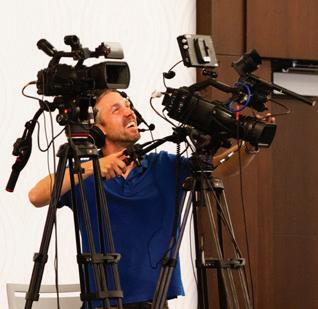

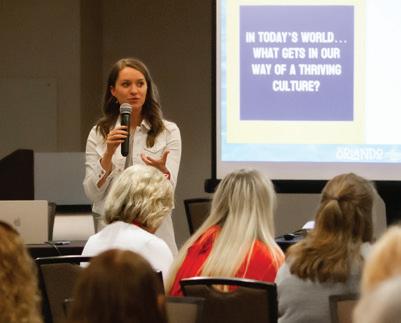
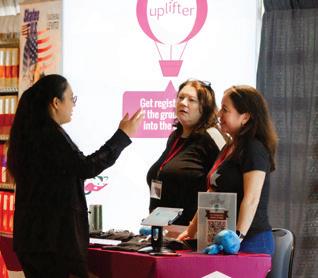
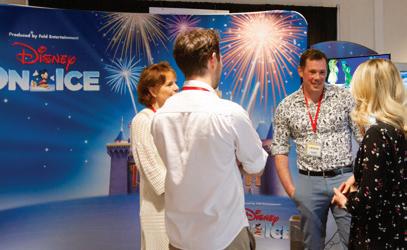
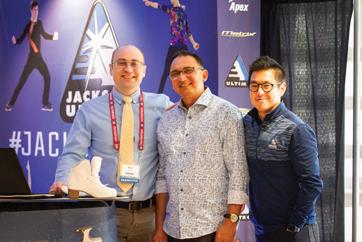



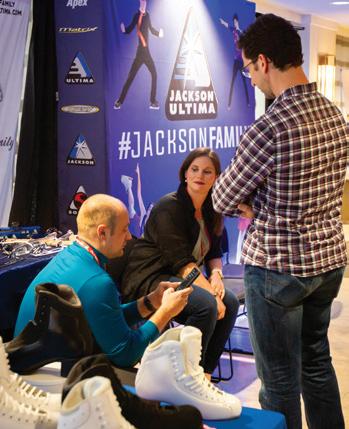
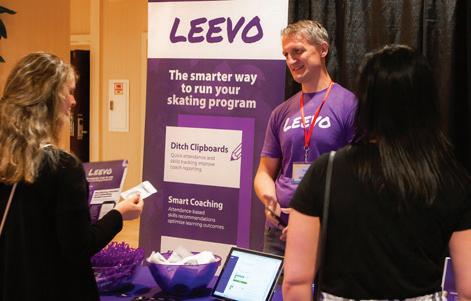


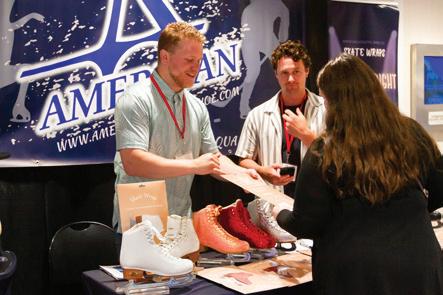
 Lauren McHenry
Tech Panel in Action
Jackson Ultima
Riedell
Disney On Ice
Uplifter
American Athletic Shoe & Co.
GRAF Leevo
Skates U.S.
Lauren McHenry
Tech Panel in Action
Jackson Ultima
Riedell
Disney On Ice
Uplifter
American Athletic Shoe & Co.
GRAF Leevo
Skates U.S.
Tracey Marek, U.S. Figure Skating’s newest CEO, recently shared at the 2023 PSA Summit that one of her key goals for U.S. Figure Skating in the next few years is to vastly grow a broader base of fans of our sport. Fortunately, developing a love of skating is also a major goal for the successful group lesson coach. While not every group class skater will ultimately choose to take up skating as a sport or hobby, if they have a great experience, they will remember skating with positive memories for the rest of their life!
We all succeed when we strive to deliver an overall fantastic skating experience that leaves the skaters and their parents saying these three key things:
1. We love skating because it’s fun!
2. We love the skating classes and programs at this rink!
3. We love the coach assigned to our class!
Everything we do as group lesson coaches should support these three pillars. Group lesson coaches have the unique challenge of simultaneously teaching technically sound skating technique while also being able to teach and manage a “classroom” of students. Although this can present its own unique set of challenges, here are three ways you can ensure a positive and effective group lesson experience.
Group coaches have a wide variety of responsibilities which include: ensuring the safety of all skaters and establishing appropriate traffic patterns for a variety of different skills; tracking the attendance and develop-
ment of each skater; providing instruction to multiple skaters in a way that addresses each person’s unique learning needs; and ensuring that parents can easily see an organized, positive class experience.
Simply put: group coaches have a lot to think about. It is nearly impossible to manage all these responsibilities on the fly. Lesson planning is one of the absolute best strategies a group lesson coach can use to make their classes successful.
When designing your lesson plan, consider the following questions:
• How many students are in the class?
• What age ranges and skill level(s) am I teaching to?
• How long is each class, and how many classes total do I have to teach these elements?
• What is the current progress level of each skater? How many first-time or repeat students do I have?
• How much space have I been given to teach this class?
• What traffic patterns can I use to make a safe and effective use of this space? What traffic patterns are appropriate for each skill, and how will they change over time?
• What teaching tools/toys are available for me to utilize?
Once you have addressed these questions, it’s time to make your “game plan.” Start with an overall plan for the term. (ex: What week should I introduce this skill to the class? What will I do in the weeks prior to prepare my class for this skill?) From there, you can create a specific plan for each class session.
Refer to the table below as an example of a wellorganized 30-minute lesson plan for a class of skaters
who are working on forward crossovers.
Once you set your lesson plan, refer back to it. Don’t get stuck on any single skill for too long…class time goes by quickly! And remember, even the best thought-out plans might need to change on the fly. Always have room for flexibility!
Safety should always be the top priority for every group class coach. Remember that whenever skaters are moving, a group class coach should never turn their back on their class. Instead, they should always position themselves where they can see every skater in their class and can help prevent collisions.
The best approach to maintaining a safe class environment is to determine what traffic patterns can be safely and efficiently utilized for each skill while keeping skaters at a safe distance from one another. Traffic pattern selection depends on a number of criteria, including:
• The amount of space allotted for the class
• The number of skaters in the class
• The speed/space/movement the skill requires
• The learning phase (Introductory, Development, Mastery, or Enhancement)
• Skater rotational directions, for jumps/spins only
As an added challenge, group coaches often have to manage multiple levels within the same class. Think about how you would manage a mixed-level class with skaters working on both forward and backward crossovers, or a mixed-level freestyle class. Rather than only focusing on the skills from one level, identify which traffic patterns could be used for each skill in both class levels. From there, design your lesson plan around the traffic patterns and have skaters work on skills from both levels at the same time that use similar or complementary traffic patterns.
As an example, both forward and backward crossovers use a circle pattern. Skaters could be put on the same circle while working on different skills. If space allows, the groups could be separated and put on their own circle. In either situation, by working on skills that use the same traffic pattern, you have enabled each skater to work on skills appropriate to their own level and can keep everyone moving without the risk of collision.
Modern psychology teaches us that humans of all ages absorb and process information through one of these three primary learning styles:
• Visual learners will best benefit from watching a demonstration of the skating skill, through the use of visual landmarks, or from drawings of patterns or positions to attain.
• Auditory learners will best benefit from hearing a description of how a skating skill works and what positions to attain, hearing the sound that the blade makes for each skill, and hearing consistent rhythms/timing.
• Kinesthetic/Tactile learners often learn best by doing, and thus will benefit from exercises that teach how parts of a new skating skill feel before they try to put those parts together into the whole skill. They may also need help to “feel” specific body positions or alignments.
While many people tend to favor one style, nearly everyone is some combination of all three learning methods. The best group coaches will teach in a way that addresses all three learning styles simultaneously. The following example demonstrates how a group coach might introduce a Salchow jump to a class utilizing all three learning styles:
1. Describe the jump. Explain the entrance, the preparation, and its similarity to other skating skills. (Auditory)
2. Pro tip: Use this auditory description as a way to engage visual learners, too! Create visualizations in your description (ex: “A Salchow is a full rotation jump that is like a forward outside three turn that first almost wants to become a sit spin but then changes its mind and becomes a Waltz jump instead.”)

3. Demonstrate a Salchow or play a video of the element while repeating your description as you demonstrate. (Visual and auditory)
4. Draw the jump tracing. (Visual)
5. Use an exercise on the wall to get the feel for the edge deepening as the free leg passes (the “edge hook”) followed by rising through the toe-pick into a small Waltz jump. (Tactile)
6. Have the class try the jump while you call out the steps/rhythm. (Tactile and auditory)
Coaching group classes can be one of the most fun and rewarding experiences for everyone involved, including you! Through effective lesson planning, traffic pattern usage, and engaging with all three learning styles, your group classes are sure to be a hit!
Jonathan Hayward (MG, MM, MFS, CPD, CD, RP) is the subcommittee chair for Group Coach ratings“If you fail to plan, you are planning to fail.” - Benjamin Franklin

he PSA Hall of Fame gained six new members in 2023, and the talents of the coaches selected run the gamut of figure skating expertise.
Syncro coach Saga Krantz, former PSA President Bob Mock, pairs coaches Todd and Jenni Meno Sand, judge and technical innovator Gale Tanger, and ice
dance champion and coach Jean Westwood were honored with their selection to the PSA Hall of Fame. The PSA Hall of Fame was established in 2001 to recognize the figure skating coaches and contributors who promoted the purpose of the PSA to provide education and support to figure skating coaches at all levels.
After starting her coaching career in her native Finland, Krantz moved to Boston in 2005 and began an association with PSA Hall of Fame coach Lynn Benson. She joined the Hayden organization as Head Coach of the Haydenettes synchronized skating team and has produced 25 national championship teams.

Krantz celebrates the growth of synchronized skating while concentrating on how the sport can and should continue to grow going forward.
“This is a great honor, and a very humbling moment,’’ Krantz said. “I feel there is so much left for me to learn. I think about the quality of skating we see today compared to what the sport was like when I came here. Our skating looks so much more like ice dance now.
“But we want to get closer to Olympic consideration,’’ Krantz said. “I know we are a new discipline compared to the others. We are still young and still learning. Our world champions events have a lot of audience participation, and we receive so much positive feedback. One day it will happen.”

British ice dance champion Jean Westwood was inducted into the PSA Hall of Fame posthumously this year. Following her tremendous skating history in ice dance with her partner Lawrence Demmy (winning the first-ever ice dance World Championship in 1952), Westwood turned to coaching in both the United States and Canada, starting in Lake Placid and in California, where she coached Maribel Vinson Owen and Ron Luddington among others.
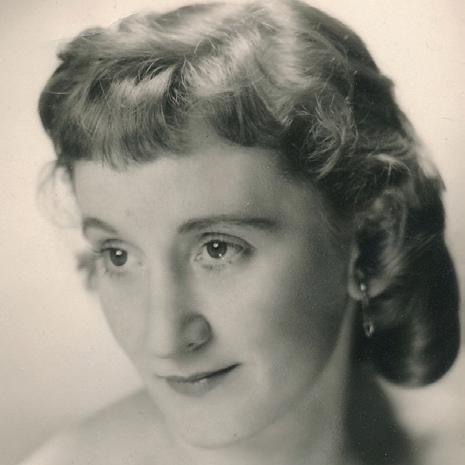
Following the tragic airplane crash in 1961 in which the entire U.S. figure skating team died on the way to the World Figure Skating Championships in Prague, Westwood began coaching in Canada, and split her time between the two North American countries through the rest of her coaching career. She coached world and national ice dance teams through the 1970s, and often coached multiple ice dance teams competing against each other for major titles.
Westwood and Demmy were the first ice dancers inducted into the World Figure Skating Hall of Fame.
Westwood passed away in 2022.
The former championship pairs team has been coaching together since 2004, and has compiled a lengthy list of pairs champions over the years, including the 2022 World Championship team of Alexa Knierim and Brandon Frazier. They recently saw their junior team of Sonia Baram and Daniel Tioumentseve win the World Championships.

Jenni Meno Sand was in attendance at the PSA Summit in Orlando to represent her husband, who suffered a heart attack in March and as of July 1 was still in recovery.

“It was a huge honor to be selected,’’ Meno Sand said. “When I was joining the PSA, Todd told me ‘coaching is a privilege.’ Skating has been a huge part of our lives as both athletes and coaches, and has given us a lot of amazing memories and our best friendships. We had the best coaching role models in Frank Carroll, Carol Heiss Jenkins and John Nicks. It is unbelievable to think that we were given this award.
“It doesn’t seem we have been coaching that long,’’ she said. “But it was a very special night and I was really happy I could be there.”
Bob Mock today is the skating director for Ice & Blades of Western Pennsylvania in the Alpha Ice Complex in Pittsburgh. His PSA Hall of Fame selection comes as a result of his endless efforts to promote the work of the PSA.
Mock is a past president of the PSA, and the former Chair of the U.S. Figure Skating Coaches Committee. He also served as the USFS Coach Representative to the U.S. Olympic Committee Coaches Symposium.
Mock’s relationship with the PSA goes back to when it was the Professional Skaters Guild of America. The fact that he had been named to the PSA Hall of Fame did not deter him from his mission, which is to coach figure skating.
“I got a call from Alex Chang, the Chair of the Hall of Fame
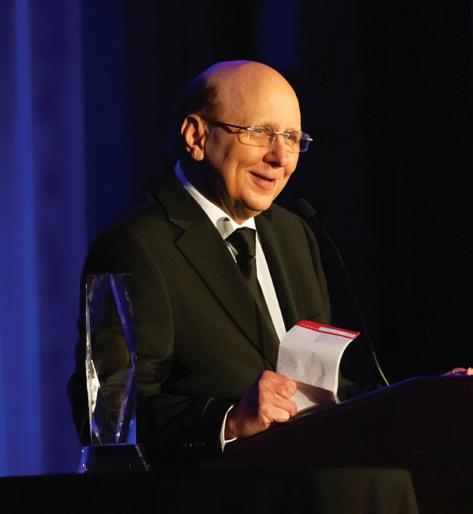
Tanger’s inclusion into the PSA Hall of Fame came as a bit of a surprise, because Tanger made a life decision years ago to concentrate on a career as a figure skating judge more than a coach.
“I started judging very young, when I was in college,’’ Tanger said. “At that point, I was trying to decide whether to go into coaching or judging. I started on the judging path, but I was not sure I would stay on that path as an official, because so many of my friends were going to the coaching side.
“All of my friends were going to be on the other side of the rink, although there are not ‘sides' to an oval,’’ she said. “But I realized we could all come together. I am thrilled to be one of those people who help communication around the oval.”
Tanger, who is also a U.S. Figure Skating Hall of Fame inductee, worked to develop judging techniques and specifics during the pandemic, when skating events were virtual and judges were looking not at skaters performing live but skaters performing on video presentations.
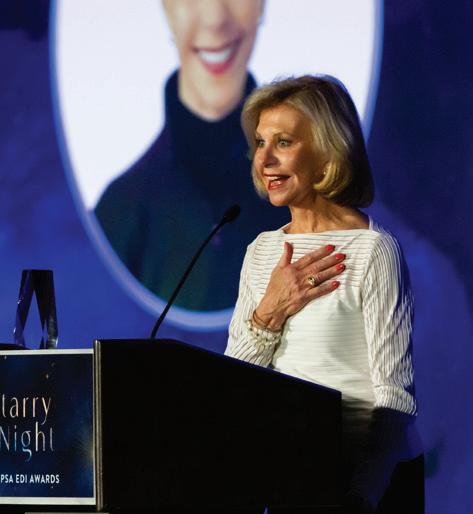
She has also played a key role in the seemingly ever-changing rules for judges. It was part of her job to make coaches understand the judging changes that occurred after the 2002 Olympic Games, when the International Judging System came into being.
“Change is the only constant,’’ Tanger said. “The coaches and skaters have pushed that. When they question us as officials or judges, ‘why are the rules changing?’ we tell them ‘you guys keep getting better, keep pushing the sport to new heights.’
“The sport continues to evolve, and it is really fun to see that kind of evolution,’’ she said.
committee, when I was in the middle of a class,’’ Mock said. “It was like a lightning bolt hit me. Of course, you are honored, and it is a great thing to be inducted into the Hall of Fame, but what struck me was all of the people along the way that had an influence on this particular event for me. It’s a humbling experience.”
“But,” he added with a laugh, “I had to go back and teach.”
Mock served as PSA President in the late 20th Century, when the PSA was still working diligently to be placed in the hierarchy of figure skating organizations nationally and internationally.

“We had to work hard to get U.S. Figure Skating and
the U.S. Olympic Committee to recognize us,’’ Mock said. “I remember the moment when the U.S. Figure Skating representative, Gerry Lane and myself signed a document that the coaches and U.S. Figure Skating would work together. That moment was a hard-fought moment. It was our Declaration of Interdependence.”
“Back in the day, when you turned professional as a coach, you were done,’’ he said. “You weren’t allowed to compete. There was no serious cooperation or coordination between the two organizations. But we all joined the PSA because we wanted to be good coaches.”
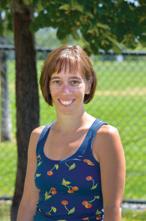 By Katie Moose
By Katie Moose
As a Program Director you are in the public eye and the “face” of skating for many customers. There are times when this can be…a lot! Whether your program is big or small—whether your duties as Director only include oversight of a small group lesson program, or, if you’re like me and you are in charge of group programming, figure skating, synchronized skating, Theatre on Ice, ice shows and recitals, hockey, curling, and rink scheduling—here are the top three things you need to be successful!
The word “organized” doesn’t necessarily mean you need a neatly labeled folder for everything and that your office is neat as a pin, with color-coded, hyper-organized drawers and all.
Although I would love to claim that this is me, that just isn’t how my life at work is. My desk is full of papers. I print out emails because I can’t be sure I’ve answered each one otherwise. There’s hardly any room to walk because I have remnants of ice shows strewn about. But there’s still a system amidst all the chaos.
To be organized means you have systems. Whatever systems you have in place have to work for you! Think about how people register for classes, clinics, and teams. What systems are in place there? How do you retrieve that information, and what do you do with it when you get it? Who else needs to see it besides you?
Another system to consider: what is your workflow like? Once something hits your desk or arrives in your email inbox, what is your next step? How do you ensure you’ve responded to what you need to respond to and keep track of important information, including dates and deadlines?
One new system that has been a game-changer for me this year was learning how to use Google Sheets. Everyone has access to Google—learn how to utilize their free apps, including Google Docs, Google Sheets, Google Drive, and Google Forms to make things more cohesive. Take time to train your staff on how to use these apps, too. Now that my coaches know how to fill in their availability on a Google Sheet, I always know who is available and who I can expect for a class,
clinic, or camp in real time. The possibilities with these apps are endless!
Learn to Skate USA offers a “turnkey” system for Program Directors. If you are part of their program, you have access to literally hundreds of resources that include lesson plans, warm-ups, class handbooks, games, curriculum guides, teacher tips, etc. If you use ISI, they also provide a large number of resources for Program Directors and rink management, too!
The best part about these resources is that they can still be adapted to meet your program’s unique needs. Think of them as a baseline or a guide—you can use them as a starting point and then build from there.
Don’t forget about other resources, too. Build a network with other programs in your area and work together with other Program Directors. If you need help, your PSA Area Rep can help put you in touch with people. PSA also offers Program Director ratings— use this as a learning tool and find a master-rated Program Director to mentor you. Not only will they guide you through the exam process, but they can be a great resource for your program, too!
Although we are all looking for new ways to attract new skaters to our programs, don’t forget that there are tried and true methods. Use the successes of others to be just as successful. And, of course, when you do come up with something new that is so fabulous, unique, and different that it works, share it with others. I want to know…we all do!
I always say I rarely work in the “now,” but instead that I work six months ahead. Here’s what I mean: Our ice show just ended, but I already have my first planning meeting for next year in a week. I already know how many high school seniors will be in our annual ice show for the next five years. My budgets for synchro and Theatre on Ice are already done for next season. Rink schedules through next May are already live on our Google Calendar, and
I have already sent out information about fall and winter programming.
My guiding question always is, What are the skaters in my program going to need from me in six months?



I know that I will not be effective at meeting their needs if I wait until they need me. Instead, I need to anticipate where they will be, what they will need, and have it ready to go. Know your skaters! Know who they take lessons from and what their test levels are. Talk to your coaches to figure out where they are, where they are headed, and how the needs of your community will change over time.
Also ask yourself what your attrition rates are for each program you manage. When you have figured it out, start planning for the time when the current group of “go getters” start to age out or find other sports. Or, better yet, how can you keep more skaters in your program, longer? It’s important that your program is fun and exciting now, but equally important that you can keep it just as fun and

exciting in the future.

Of course, this is not an exhaustive list of everything that a Program Director needs to find success. To be a Program Director is to have a never-ending job. But by first focusing on these Top 3 Tips, you’ll be well on your way to having a more successful, more dynamic program!

School figures from the earliest days of skating gave us all the current turns in our sport, including threes, brackets, counters, rockers and loops. In the spirit of discussing “threes” in this issue, let’s explore turns more in depth.
Creating each type of turn is based on many principles.
There are many forces and leans used to create turns. Remember: all turns involve rotation! The hip axis of the body is always square to the print as the shoulders either wind up or release. Quality turns require core control!
In all turns except loops, the skating blade is manipulated by either rocking forward to turn backward, or by rocking backward to turn forward. The “rocking” of the blade or foot in turns greatly affects the depth of the turn. Loops, on the other hand, are turns without a change of direction. Both forward and backward loops are skating on the ball joint of the foot to create the “top” of the loop.
Ice temperature affects the quality of turns. Soft ice results in the blade cutting deeper into the ice. Scraped turns are more common as the ice “grabs the blade” and they stay on the edge. Hard ice has less friction which results in a “poor grip”. Skids occur here as you are on a flat (and there is more snow on the print).
All turns must have a “rise” and “fall” of the skating knee. Use
“down-up-down” as trigger or cue words. The skater is on a “straight” leg but not “locked" on the “top” of every turn, except loops. Think of the concept of a spin, where the rise up and the body parts coming close to the axis of rotation reduces moment of inertia. The same is true for turns. This “rise up” enables the skater to execute the turn quickly and effectively. Use your “sight” to control turns, especially the exit.
Use a “scissor” action to deepen turns. The free foot is like a pendulum and “scissors” to the opposite direction of the skating foot. It is positioned almost straight as the free foot swings optimally and parallel to the long axis of the turn. (The range of movement in the swing is optional depending on the skater’s strength and talent…. usually the length of the skating foot.) The speed of the skating foot is increased on the entry and the exit of the turn from the quickness of the foot speed and free leg action reversing and rocking on the entire arc of the turn combined with the quick reversing of the shoulders. Practice this concept at the barrier first to introduce this technique before experimenting with this on the arc. Finally, remember that like
everything in skating, there is a mental aspect involved in turns as well. Skaters must be able to anticipate the change of direction, either forward to backward or vice versa, as well as a change of circles. Skaters must know “what’s coming” in order for their body to facilitate the action of the turn.
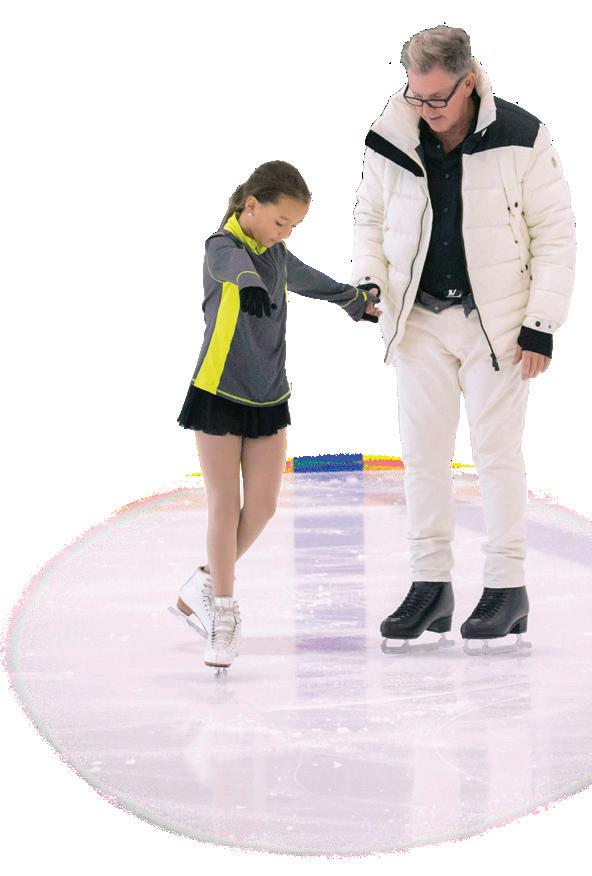
For all turns, here are some exercises you can try:
• Draw a box around a turn to check for symmetry.
• Identify short and long axis.
• Do a lot of board work to isolate positions.
• Use markers on the ice to draw turns. (Remember: a picture is worth a thousand words!)
• Use video replay.
• Do turns first on two feet, then to one foot.
• With permission, hold a skater’s hand when executing turns.
• Modulate your voice….wiiiind up and releeeease.
Let’s end our discussion by looking at three-turns—and all other turns—in greater depth:
A three turn is created by the shoulders of the body rotating into the circle whether turning forward to backward or vice versa. All threes rotate “into” the circle!
As the skater approaches the turn, the shoulders “wind-up.” Specifically, the shoulder blade pinches into the spine prior to the turn.
• Forward Outside three —skating shoulder pinches back
• Forward Inside three –free side shoulder pinches back
• Backward outside three — free side shoulder pinches back
• Backward inside three —skating shoulder pinches back
Just prior to the turn at the “cusp” (where the arc of the circle changes shape suddenly to a smaller radius) the skater releases the “wind-up” and rocks to the opposite end of the blade to create the turn. The skater then maintains their balance on the “trailing” part of the blade as they exit the turn. When executing three-turns, remember to keep your knees together.
Three turns are recognized by their “open tip” at the top of the three-turn. Here the edge rolls from one edge to another at the width of the blade…..thus the space between the edges.

Once the skater returns to the large arc or circle they “check” the rotation of the turn by applying pressure to the opposite side of the body. Here the opposite shoulder blade pinches into the spine to “slow down” the rotation of the body until a consistent arc is maintained. Remember: “check” can only slow down rotation. To stop rotation you would have to put your free foot down on the ice, or better yet, fall!
The bracket turn is much more difficult than the three-turn. Here the turn sits “on top” of the arc, or like a hat on top of your head! The turn is created by the shoulders rotating out of the circle on forward turns and into the circle on back turns. (Remember: all this time, your hips are square to the print and only the shoulders are rotating. To make an analogy, you are holding a jar and only turning the lid to open the jar.)
Again, when turning, you are always rocking to the opposite end of the blade and then “riding out” of the turn on that part of the blade. Physically, you feel your hips “swivel” underneath you as your shoulders are parallel to the short axis or barrier.
Whereas three turns progress across the ice as they are executed (the open space between the top of the turn) brackets regress. The weight of the skater shifts laterally in the skating foot from side to side or edge to edge as the bracket is executed. When this happens with a perfect wind-up and release there are “bunny ears” at the top of the turn. The print looks like a criss-cross of the tracings to create this image (also like making an “x” with your two index fingers).
• Forward Outside bracket –free shoulder pinches back
• Forward Inside bracket –skating shoulder pinches back
• Backward outside bracket – skating shoulder pinches back
• Backward inside bracket –free skating shoulder pinches back
Like the three-turn, when executing brackets the knees must be pinched together.
Just like the name of the turn, the body “counters” or rotates against the circle to create the turn. The free leg is extended forward, pointed and turned out, prior to the turn. The skating leg is bent. The thighs are pressed together and the shoulders or upper body are rotating out of the circle twisting through the waist prior to the turn. As the body is about to execute the turn the skater rises up in the skating leg and draws the free foot parallel to the skating foot. Simultaneously, the skating foot “rocks” to the opposite end of the blade as the shoulders release and the hips swivel underneath the torso. On the exit of the turn into the new circle, the free foot is once again extended and the skater’s line of vision is in the direction of travel. This applies to both forward and backward counters.
Unlike the three-turn or bracket, the print on the ice is a single line as there is no change of edge in counters. To quickly surmise this turn we say a “counter goes in like a bracket and exits like a three”. The force on the edge is greater entering the turn than the exit of the turn to accommodate the action of the shoulders against the hips. This is true as the “wind up” is more strenuous than the exit. The pressure on the edge is exaggerated as you must maintain the edge and arc on the entry to create a superb turn.
Similar to the counter this is another “change of circle” turn. The upper body or shoulders rotate into the circle in preparation for the execution of the rocker turn. The free leg is extended forward, pointed and turned out, prior to the turn. The skating leg is bent. The thighs are pressed together and the shoulders or upper body are rotating into the circle twisting through the waist prior to the turn. As the body is about to execute the turn the skater rises up in the skating leg and draws the free foot parallel to the skating foot. Simultaneously, the skating foot “rocks” to the opposite end of the blade as the shoulders release and the hips swivel underneath the torso. On the exit of the turn into the new circle, the free foot is once again extended and the skater’s line of vision is in the direction of travel looking out of the circle. This applies to both forward and backward rockers.
Like the counter, the print on the ice is a single line as there is no change of edge in rockers. To quickly surmise this turn we say a “rocker goes in like a three-turn and exits like a bracket”. The force on the edge is greater exiting the turn than entering the turn. This is true as the reverse of the shoulders is more strenuous on the exit. The pressure on the edge is exaggerated as you must maintain the edge and arc on the entry to create a superb turn.
Loops wind up like threes. To introduce a forward outside loop, draw the loop pattern on the ice. Have the skater “trace” the print. They love this as they first learned to trace when a young child. When executing a forward loop, look into the center of the loop and again into the center of the loop on the exit of back loops (unwind).
On all forward loops, the free leg sweeps wide then draws forward as the skating knee rises and the thighs are brought together after the top of the loop. The feet are parallel at the top of the loop. On forward inside loops, the free foot draws a loop with the big toe inside the loop with tension like stirring a pot of beans.
On back loops, the upper body rotates vigorously on the entry only to release and

unwind on the second half of the loop. Back outside loops lean out over the free hip on the entry, like you’re looking over the edge of a cliff. On the exit, the shoulders and free foot are reversed so that the skater is now looking into the circle. (An excellent exercise to introduce a backward outside loop is a forward inside three exiting the turn with the free foot forward and the upper body winding outside of the arc.) Back inside loops lean out as well, looking down at your skating foot with your chin in line with the arch of the skating foot and your shoulders parallel to the skating foot. The free foot is forward and crossed above the knee of the skating foot (pigeon-toed). Then reverse the action of the shoulders and draw the free foot inside the loop on the second half of the turn.


Interestingly, all loops—whether forward or backward—are skated on the ball of the foot for the top of the loop. The shape is that of a “tear drop”.
Twizzles are symmetrical unchecked three turns evenly rotated in a straight line and on flats! Hold your breath when executing twizzles Tighten your abdominal muscles and keep the free foot and arms in a stationary position. Lower-skilled skaters must keep the free leg touching the skating leg. The skater should think like they have a book on their head when twizzling with their eyes open. Always go for an even speed of rotation. The skater should use sight and spot the same location before and after the twizzles. Most importantly, rock to the ball of the foot to turn backwards and the heel to turn forwards. This is crucial! Skidded or scraped threes, double-three action, loss of balance, uneven rotation and small loops are all things we want to avoid!
Janet Champion works with a demonstrator at the 2018 PSA SuperSite in Missouri.“Your feet are the foundation for rotation.”
~ Christy Krall, World & Olympic Coach



Hydration is arguably the most important part of nutrition for athletes. Hydrating helps to increase energy, regulate body temperature, transport nutrients through the body and waste out, and aids in mental clarity. Good hydration ensures that the athlete has improved muscle function and improved circulation which will allow for adequate oxygen and nutrients to be delivered to the muscles. Hydrated muscle will work better than dehydrated muscles. Dehydration can lead to a higher risk for injury and a decrease in performance. Research shows that dehydration causes a 2% decrease in athletic performance. Signs and symptoms of dehydration include cramps, headaches, dizziness, and fatigue. The athlete should never allow themselves to get to the point that they are experiencing these symptoms. Listed below are three ways to ensure proper hydration.
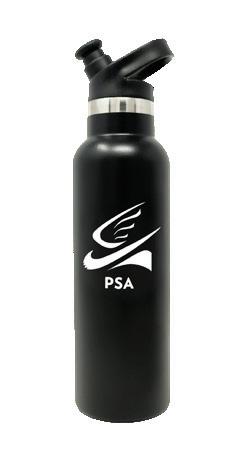
Tip #1
Water should be the first thing in the athlete’s body first thing each morning. Water is the gold standard of hydration, especially for athletes. Drinking in the morning will help with energy and an increased intake throughout the day. Water is calorie free and easily accessible. It is considered an essential nutrient, which means the body can’t produce enough to meet its daily needs, so we must take it in. For people who don't enjoy the taste of plain water, try adding some sliced fruit such as lemons, limes, oranges, or pineapple, or drinking it warm with honey. Ready for a major life hack? Most coffee shops offer free ice water to customers, so make sure that the next time you’re picking up your latte, you grab a water, too!
General Hydration Guidelines:
Before exercise:
Drink about 4-16 oz. of water 1-2 hours prior. Drink 8-12 oz. of water 10-15 minutes before you exercise.
During exercise:
Drink about 5-10 oz. of water every 10-15 minutes. If exercising longer than 60 minutes, drink 5-10 oz. of sports drink every 15-30 minutes.
Weigh yourself before and after a long practice and replace fluid lost by drinking 20-24 oz. of water for one pound lost within two hours after the workout
Save the sports drinks for hard, long workout days. Sports drinks are good for athletes who train intensely for over 60 minutes. They supply electrolytes such as sodium and potassium as well as carbohydrates in the form of sugar which allow for quick hydration and absorption. Sports drinks are most appropriate for sports such as running, for sports where athletes practice in extreme environmental conditions, or for athletes who are prone to excessive sweating. A Harvard study in 2014 showed that the more frequently sports beverages were consumed, there was a greater association with an increased body mass index, leading to overweight/obesity issues. It is more appropriate for athletes to consume a balanced diet along with adequate water intake.
Foods can be hydrating as well. Around 20% of our total water intake comes from water-rich foods such as lettuce, leafy greens, cucumbers, bell peppers, celery, berries, and melons. Anything liquid based (ie. soups, smoothies) will also contribute to your daily water intake. Even caffeinated beverages count as updated research has shown that more than 180mg of caffeine daily does not necessarily lead to dehydration.

The PSA is truly a special organization. It doesn't matter where in the world you live...as members of the PSA, we are all part of the same community. In this new section, we celebrate that community. We encourage you to celebrate with us and join the conversation!

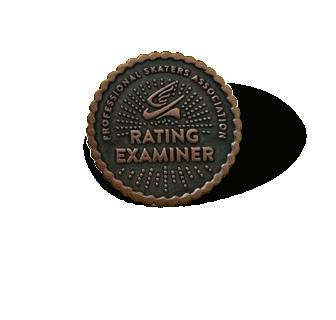
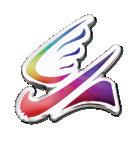
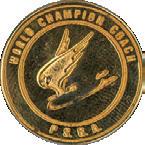


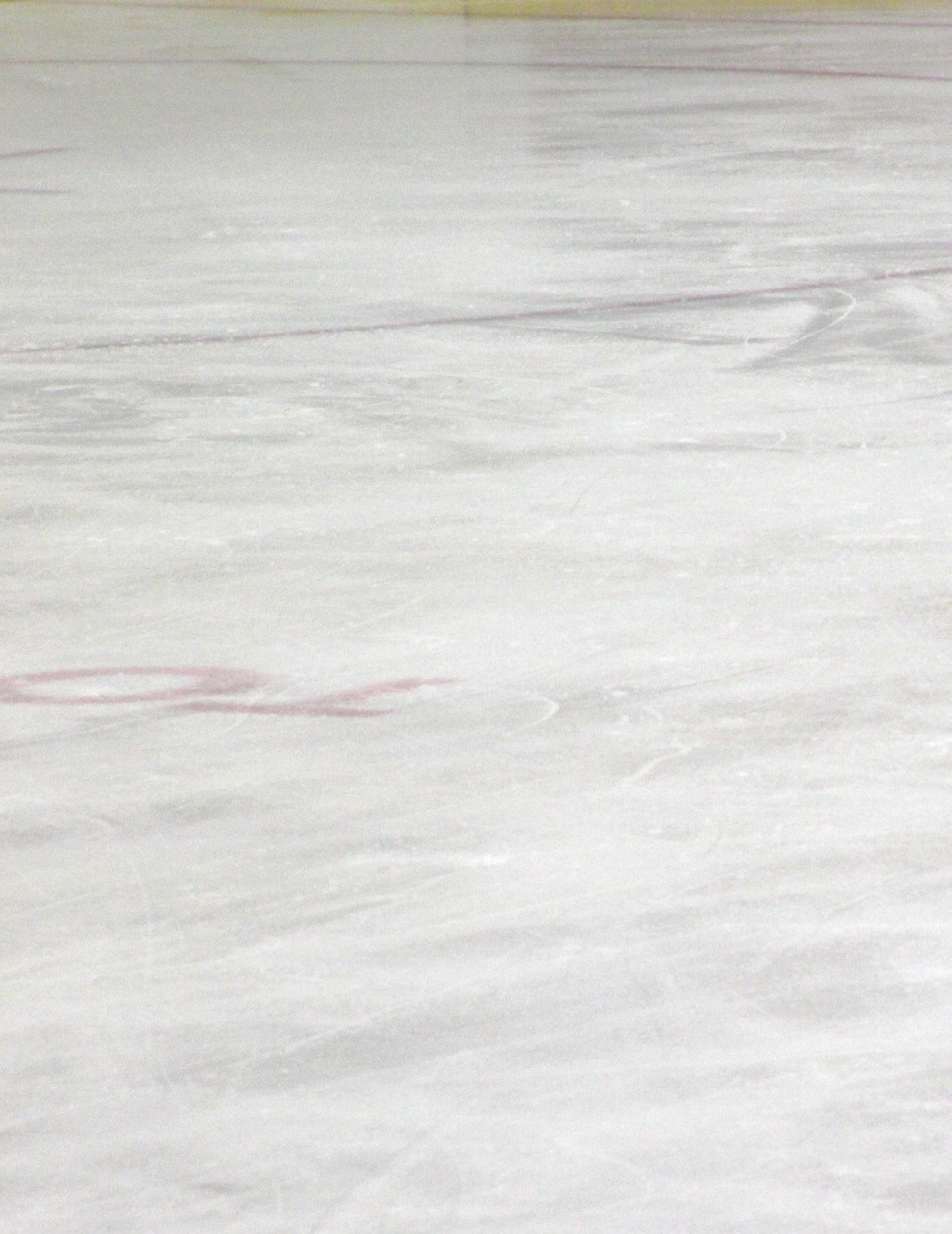
Celina Ackerman
Alexandra Albano-Fontaine
Camila Antillon Novelo
Luis Arrieta
Tia Bell
Amy Black
Mckenzie Brouk
Tracy Burton
Melania Butko
Clare Cahill
Sarah Canfield
Isobel Carney
Sage Carni
William Church
Kathryn Cochran
Emma Coppess
Eduardo Cruz
Sofia DeLeonardo
Tracey Dispensa
Viktoriya Drazdova
Linda Jordan Dryer
Jack Estfan
Paige Felton
Allison Gallagher
Rachel Geib
Robert Goodwin
Tatiana Haas
Carly Hausner
Hannah Hinojosa
Natsuki Hirota
April Jones
Laura Julio
Astrid Kaisner
Claire Kearns
Lilly Klingsporn
Angela LaMere
Taylor Lance
Gretchen Lentz

Isabelle Levy
Jack Liu
Ruth Loperfido
Jennifer Matison
Danica Medina
Jimmie Santee
Ann Hanson Clemons
Mariel Davila Moreno
Marisol Paiz
Karen Wiesmeier
Jimmie Santee
Jimmie Santee
Jimmie Santee
Jimmie Santee
Jimmie Santee
Marylill Elbe
Sarah Carney
Joelle Forte
Shawna Ludy
Shira Selis
Derrick Delmore
Marisol Paãz
Jimmie Santee
Stacie Kuglin
Vitaliy Danylchenko
Corrina Miller
Erin Banner
Jimmie Santee
Jimmie Santee
Katie Luburich
Kimberly Navarro
Lisa Ware
Tara Castagna
Cathryn Tremewan
Sindy Kim
Jimmie Santee
Leanne Abugov-Schaller
Jenni Flores
Rachel Franchock
Allye Ritt
Jimmie Santee
Camille Pitman
Sarah E. Bott
Robert Kaine
Brad Vigorito
Pamela Sandborg
Jean Mims
Jennifer Brown

Tiffany Miglio
Melissa Miller
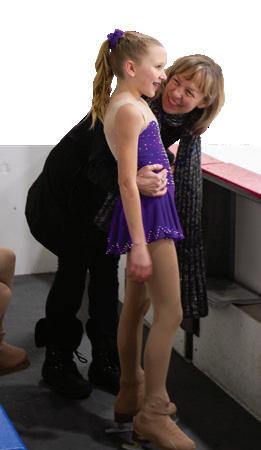
Sarah Muhl
Sydni Nikolai
Gregorio Nunez
Lauren O'Neill
Felicia Patterson
Avery Perel
Viacheslav Peshkilev
Signe Ronka
Skyler Rupp
Lily Samuels-Shragg

Alexis Semanskee
Margaret Skyles
Judith Sokol
Catherine Spale
Elsa Wagnon
Jessica Wilson
Ella Wingler
Hannah Yi
Campbell Young
Ian Zachary
Erin Leonard
Colleen Phillips
Ladelyn McConnon
Teri Haag
Kristin Harris Alberico
Shay Sterlace
Peter Sasmore
Jimmie Santee
Andrey Keforenko
Valory Thompson
Rachel Nevares
Michelle Hocknell
Jimmie Santee
Jimmie Santee
Jimmie Santee
Katie Holmes
Rebecca Cacioppo
Jimmie Santee
Mary Anne Williamson
Jimmie Santee
Jimmie Santee
Michael Villarreal
Do you know coaches who are new to the profession?

Help them get a head start on their coaching career, and encourage them to join PSA!

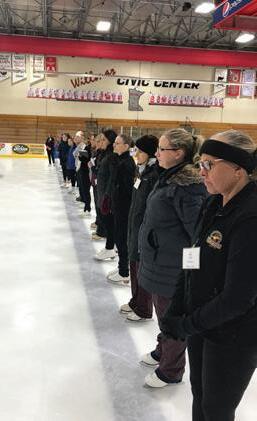
SEPTEMBER
Date September 6, 2023
Event Quickstart Your Hockey Season – 3 Part Webinar Series
Credits 3 PSA Educational Credits
OCTOBER
Date November 15, 2023
Event Virtual Ratings ~ All levels of Free Skate, Skating SKills, Group, & Program Director
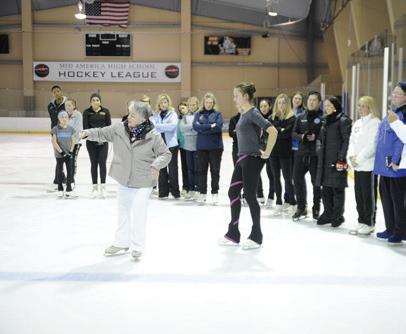
Credits 1 PSA Educational Credit
Opens August 1, 2023
NOVEMBER
Date November 17-19, 2023
Event Virtual Ratings ~ All levels and disciplines aside from Synchronized Skating
Credits 1 PSA Educational Credit
Opens August 15, 2023
For the most up-to-date Calendar of Events, visit www.skatepsa.com

JOB OPPORTUNITY | BIRMINGHAM FIGURE SKATING CLUB
Birmingham Figure Skating Club (BFSC) and Pelham Skate School seek an advanced level coach to join staff. Immediate full lesson schedule with substantial professional advancement opportunities.
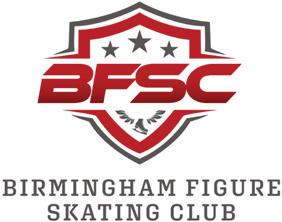
Please contact: Keir Breitenfeld, BFSC President, at 850.376.5000 or kdbbham@gmail.com
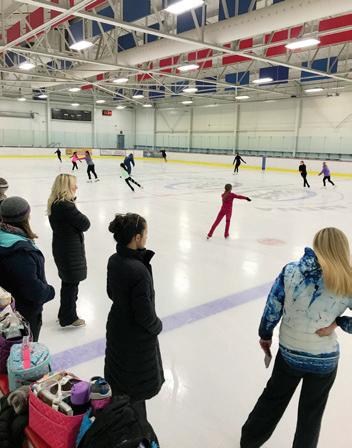
You can upgrade your membership at any time!
All three membership categories offer the following benefits:
• Free PSA E-Learning Courses
• Member rate for events and merchandise
• Accreditation opportunities
• PSA Today monthly e-newsletter
• PS Magazine
In addition to those base benefits, the Community and Professional tiers include access to PSA TV, free PSA Webinars, and Accelerated Coaching Partnerships (ACP). The Professional membership holds further exclusive perks.
PSA's Professional membership is the only category that meets U.S. Figure Skating compliance requirements. It is also the only enrollment option that receives a printed version of PS Magazine.


Visit our Membership page for all the membership category benefits and details.
WWW.SKATEPSA.COM
As a member of PSA, you have access to educational events, valuable resources, and member discounts.
